eturned to Growth Has R







Most of the companies on the Security 50 list achieved significant growth in 2021. However, 2022 ends with the security industry beginning to address issues that point to major challenges in 2023.

INTERVIEW
14 Khalifa Ibrahim Al Saleis, Executive Director, Security Industry Regulatory Agency, UAE
IN FOCUS
26 Security 50: Memoori Research
The Major Trends Shaping the Physical Security
29 Security 50: Novaira Insights Analysis
The Video Surveillance
Market Continues to Grow, but So Do the Prices
30 Security 50: OSSA Analysis
Orchestrating the Digital Data Flow
32 Security 50: Regional Analysis
EMEA Doing Well Amid Inflation and Supply Shortages

MARKETS
38 Championship Without a Single Incident Qatar, a Place Where History Was Made
PRODUCTS & SYSTEMS
44 Trends in Access Control and Video Surveillance Demand Rises as Well as Challenges
50 Dahua Technology
‘Smart’ products displayed by Dahua at Intersec 2023
52 ASSA ABLOY
Expert whitepaper can help inform more strategic facilities management
53 Suprema
AI-Based access control & time attendance solutions
54 The future of security
Transforming Alarm Management
PRODUCTS & SYSTEMS
55 TP Link Vigi cameras
How Can AI Guard Your Business Security?
COLUMN
56 Ali Ayoub, Exhibition Manager, ADNEC
Metaverse adoption and the implication for national security
EVENTS
58 Get Ready for the World Police Summit Step Forward a Global Policing Community
59 Barcelona
ISE 2023 sets new records
60 Dubai Intersec 2023 Introduced a New Security Era

• 32 Channels (ND9442P – 16 Channels)

• Up to 20MP Camera Resolution
• 4K Video Output Supported

• Fisheye Dewarp
• Deep Search
• Smart VCA Event Search
• 1080P 360fps
• Built-in 16-port PoE Management
• RAID 0, 1, 5 Supported
• 16 Digital Inputs/ 8 Digital Outputs
• VIVOCloud, VAST 2 & VSS Integrated
• Chrome Supported
• Made in Taiwan, NDAA
more info contact
| info@inteleye.sa
+966 920033372 | Mobile: +966 540413960
Platinum Tower, Sari Street, Al-Faisaliah, Office #305B, Jeddah, Saudi Arabia
Professional media for complete security solutions
Management
Mahir Hodžić, General Manager mahir.hodzic@asmideast.com
Adis Hodžić, CEO adis.hodzic@asmideast.com
Editorial Staff
Damir Muharemović, Editor-in-Chief damir.muharemovic@asmideast.com
Orhan Hadžagić, Associate Editor orhan.hadzagic@asmideast.com
Emily Lin, Contributing Editor Emily.Lin@taiwan.messefrankfurt.com
Mirza Bahić, Journalist editorial@asmideast.com
Nermin Kabahija, Journalist editorial@asmideast.com
Art Staff
Sanel Palislamović, Art&Design Editor sanel.palislamovic@asmideast.com
Nelmedin Kolubara, DTP&Art Design dino.kolubara@asmideast.com
Sales Amar Pap, Business Development Manager amar.pap@asmideast.com
International Sales
Israel Gogol, International Sales Director Israel.Gogol@taiwan.messefrankfurt.com
a&s Middle East offers the latest news and insights on video surveillance, access control, intrusion detection, fire alarm, mechanical protection, man guarding, cyber security, artificial intelligence, IoT, big data, smart homes and buildings, industrial automation, information, communication technology to Middle East region professional channel players.
a&s Middle East is part of the media network of the Messe Frankfurt Ltd – Taiwan Branch, which offers several media platforms — asmag.com and a&s magazines, published in English, traditional Chinese, and three other languages, providing the most comprehensive industry trends, product, and supply chain information. The total annual circulation is approximately 515,000 copies around the globe.
a&s Middle East is published 6 times a year, Jan/Feb, March/ April, May/June, July/August, Sept/Oct, and Nov/Dec.
Payment Instructions
Annual subscriptions are payable in USD, EUR, or AED. Subscription inquiries per your request.
EUR: AE340400000653005131002
Account No. 0653005131002
USD: AE070400000653005131003
Account No. 0653005131003
AED: AE610400000653005131001
Account No. 0653005131001
Copyright Statement
© Copyright by Privus Agency Ltd. All rights reserved. Any republication, copying, redistribution, or reproduction of the magazine in any form, including electronic, without the prior written consent of the publisher, is prohibited. Advertisers are solely responsible for the content of advertising material. The publisher bears no responsibility regarding possible legal, patent, content, or brand disputes of the advertiser.
Legal disclaimer
The information in this magazine has not undergone any formal testing by Privus Agency Ltd. and is distributed without any warranty expressed or implied. Implementation or use of any information contained herein is the reader’s sole responsibility. While this information has been reviewed for accuracy, there is no guarantee that the same or similar results may be achieved in all environments.
Corporate Address
Privus Agency FZ-LLC
JT010006, Al Shohada Road, Ras Al Khaimah, UAE
Tel: +971 58 983 4258
Web: www.asmideast.com
Marketing: marketing@asmideast.com
First, know that I am pleased to announce that an idea that has been brewing in the drawers of our global editorial offices from China and Taiwan to Bosnia and Herzegovina and from India to Poland has finally seen the light of day: you are holding the first issue of a&s Middle East magazine in your hands. Our new project is the result of 20 years of business experience in the European and Asian security world. The manager of the project is the management and editorial team raised from the success of a&s Adria magazine, with its close to two hundred print issues, Adria Security Summit, the largest security trade show in Southeast Europe, and Connect2b, one of the leading European platforms for connecting market players. All of these projects serve as the seals of quality and experience in the media business and the organization of major trade events. The Automation & Security magazine Group will take part in shaping the Middle Eastern security scene with its in-depth knowledge of the security industry.
It is a fortunate coincidence that the first issue of the a&s Middle East magazine came out right after the FIFA World Cup in Qatar, the first major global sport event held in the Middle East. This superbly organized event that gathered the nations on the border between the East and West passed without a single incident - as it should be in the cradle of cultures and religions. That’s why we put this event in the spotlight in our first issue. It was an unprecedented organizational endeavor in the world of global sports, where all stadiums were connected to one control & command center, monitored by more than 15,000 cameras, given full access control across all gates and doors, with drone-assisted traffic monitoring and open communication channels with thousands of security guards. Such a level of excellence has never been achieved before, which is proof of the development and stability of the Gulf countries.
In the very first issue, you can also read about the largest survey of the global security industry, Security 50 in which the leading market and technological trends are analyzed through the business results of the 50 largest security companies. The security industry, despite the great challenges, is recovering, to the joy of all of us. The spring of the security industry awaits us, and our a&s Middle East magazine will be its first herald.
 Mahir Hodžić, General Manager
Mahir Hodžić, General Manager
Please visit our official website www.asmideast.com and select ‘Subscribe Now’ option under THE MAGAZINE menu.
Subscription includes all six editions. Digital edition is FREE and readily available at the official website.









Leading smart home platform company Vivint Smart Home’s board of directors unanimously approved an agreement with NRG Energy Inc. for an acquisition worth $12 per share or $2.8 billion with an implied multiple of 6.3x run-rate Enterprise Value

to Adjusted EBITDA. Vivint Smart Home’s mission is to help its nearly two million customers live intelligently by providing them with technology, products, and services to create a smarter, more efficient, and safer home. The acquisition will create the leading essential home services platform fueled by marketleading brands, unparalleled insights, proprietary technologies, and complementary sales channels. “The acquisition of Vivint is a transformational step in achieving our vision. Customers want simple, connected, and customized experiences that provide peace of mind. Vivint’s smart home technology strengthens our retail platform, improves our customer experience, and increases customer lifetime value. I am excited to welcome Vivint to the NRG family,” said Mauricio Gutierrez, President and CEO of NRG Energy. NRG will acquire 100% of the outstanding equity of Vivint for a total transaction value of $5.2 billion consisting of about $2.8 billion in cash and the assumption of $2.4 billion of debt (net of cash), which benefits from attractive terms and pricing. The transaction is expected to close in the first quarter of 2021 and is subject to customary closing conditions. n
As Milestone moves from being a global leader in providing Video Management Software within security to a global leader in datadriven Video Technology both in and beyond security, Rahul will play an essential role as a member of the executive leadership team. Rahul Yadav joins Milestone from TV 2, the Danish commercial broadcaster, where he held the position of Chief Technology and Digital Officer. Prior to TV 2, Rahul held senior leadership positions at KMD and Bang & Olufsen. Reportedly Rahul Yadav’s primary focus will be on further strengthening Milestone Systems’ position as a provider of market-leading Video Management Software. Also, driving innovation in datadriven software based on responsible technology principles will be essential. The dedicated and highly skilled Technology Group will continue to focus on delivering innovative, second-to-none business outcomes for customers and partners to maintain our strong market position. n

around £4.3m from EDF as part of the Sizewell C nuclear plant development. The contract is expected to continue through 2023, with tasks involving managing access to the site, monitoring surveillance systems, and incident management reporting. Since July 2015, G4S has been working on a 10-year contract to provide security services during the construction of Hinkley Point C, the first new nuclear power station built in the UK in generations.

G4S Secure Solutions UK is set to create almost 100 jobs in the Suffolk area after the company won a security contract worth
“For over a decade, G4S has been committed to securing the UK’s critical national infrastructure and we’re incredibly proud of our work in creating thousands of job opportunities for local residents and sector specialists throughout the country.” says Alistair McBride, Strategic Account Director for G4S UK’s Nuclear Power and Utilities Sector. Once constructed the nuclear power station will provide low-carbon electricity for 6 million homes for at least 60 years. n
G4S WINS CONTRACT TO PROTECT SIZEWELL C NUCLEAR POWER PLANT

Over the last three years the Dubai Police, represented by the General Department of Traffic, benefited 10,140,892 people with traffic campaigns on social media platforms. These stati-

stics were revealed during the General Department of Traffic annual inspection conducted by His Excellency Lieutenant General Abdullah Khalifa Al Marri who was briefed on the traffic campaigns carried out last year to raise awareness of the public on the safety of pedestrians, dangers of sudden swerving, life-threatening speed, dire consequences of failing to maintain a safe distance, the safety of school areas and safe driving on special occasions. The awareness campaigns and lectures on traffic laws and regulations benefited some 150 thousand motorists and 68 thousand beneficiaries consecutively last year.
Lt. Gen. Al Marri reviewed the Traffic Institution Statistics of last year when 47 people attended 20 lectures on traffic points. At the same time, 765 benefited from Drivers’ Traffic Safety, and 87 internal and external workshops were delivered to raise the awareness of 1379 motorists. Moreover, the Institution carried out 52 workshops for Smart Training Centre, which benefited 1415 people, and conducted 16 training sessions for 16 private security companies that benefited 466 security guards. n

From January 2023 ADI Global Distribution services customers across the Middle East will have access to the complete line of Clevertouch interactive panels. Besides panels Clevertouch is known for producing digital signage, commercial displays, room booking systems and cloud-based content management tools for education and enterprise sector. According to Ian Neale, EMEA Pro AV business leader, ADI is focused on providing customers with the latest products to build complete solutions and the addition of Clevertouch to their services will enhance their market position. “In addition to being an interactive panel manufacturer, Clevertouch is focused on
serving as a technology solutions provider and aligns with our strategy to drive strong customer relationships and deliver exceptional support” said Ian Neale. “As the strength of the Clevertouch range of products continues to grow, we’re looking forward to offering our products through ADI to gain access to new customers, sales channels and technology partners,” said John Ginty, EMEA sales director, Clevertouch Technologies. “Through ADI’s strong distribution channels, we’ll expand the market reach for our interactive displays, commercial displays and digital signage products across the Middle East.” n

Motorola Solutions has received Joint Interoperability Test Command (JITC) certification from the U.S. Defense Information Systems Agency for its Federal Information Processing Standards (FIPS)compliant Avigilon video security solutions. The Motorola Solutions’ Avigilon Control Center (software release version 7) and H5A Series cameras have gone through rigorous interoperability testing from a JITC lab approved by the Department of Defense. JITC provides risk based test, evaluation and certification services, tools and environments to ensure DoD information technology capabilities are
interoperable and support mission needs. “We’re proud to support our defense and federal customers, dedicated to protecting our national security,” said Joe Balchune, vice president Federal Markets, Motorola Solutions. “JITC certification from DISA highlights Motorola Solutions’ commitment to supporting our customers with security solutions that meet exacting criteria and can be trusted to help protect their operations.” Motorola Solutions’ Avigilon cameras allow its customers to be National Defense Authorization Act (NDAA) Sec. 889 compliant. n
DUBAI POLICE TRAFFIC CAMPAIGNS BENEFIT 10M PEOPLE OVER LAST THREE YEARS

According to a new Memoori research report the global physical security market (access control, video surveillance, intruder alarm, and perimeter protection) has demonstrated resilience and adaptability amid growing geopolitical tensions and emerging recession. Trade tensions between China and the US have seen
a series of legislative moves that have disrupted the flow of both physical security products and key product components. These tensions are also spilling over into Europe and the Middle East. If trade barriers continue to emerge we will see a dramatic polarization of the physical security global market. As estimated annual revenues from the physical security product market increased by over 9% in 2022, rising to $42.3Bn. Going forward growth will be tempered somewhat, averaging 6.5% per annum to 2027. Video surveillance makes up nearly 58% of the market in 2022, with China continuing to dominate sales in this sector, accounting for just under one-third of the total global market. Whilst China’s Sharp Eyes projects are winding down, Memoori analysts suggest that continued state investment into smart cities as well as programs such as the Safe China initiative should continue to drive sales of security products in China. n


Motorola Solutions announced it has acquired Rave Mobile Safety, a leader in mass notification and incident management that helps organizations and public safety agencies communicate and collaborate during emergencies. The company is based in Framingham, Massachusetts. State and local governments and enterprises, including hospitals, rely on Rave’s cloud-native, customizable platform to support emergency coordination. Users can effectively communicate operational updates and alerts, such as health emergencies, lockdowns, and evacuations, so people are better informed to take appropriate action. The platform is also used by thousands of K-12 schools and higher education institutions across the U.S. Rave’s panic button solution can immediately provide real-time incident details and essential data like location to 9-1-1 call takers and first responders, and its incident management solution helps
to coordinate the emergency response across school safety personnel, administrators and first responders. n
According to a new Marketsandmarkets research report, the global perimeter security market is projected to grow from USD 70.8 billion in 2022 to USD 100.2 billion by 2027 at a compound annual growth rate (CAGR) of 7.2% during the forecast period. Factors attributed to driving the market growth include increasing security breaches and perimeter intrusions worldwide, and rising demand for perimeter security solutions. In terms of components, it is the systems segment that the analysts expect to grow with the highest CAGR during the forecast period, because of their versatility and wide use by businesses for various applications including video surveillance, perimeter
intrusion, access control, alarm systems, and others, to enhance security operations. Honeywell, Dahua Technology, Bosch Security and Safety Systems, Hikvision, Axis Communications, Senstar, Pelco, Raytheon Technologies, Teledyne FLIR, Thales, Johnson Controls, Fiber Sensys, Ameristar Perimeter Security, Optex, Panasonic, Southwest Microwave, Avigilon, Cias, Gallagher, Ingersoll Rand, Infinova, Sorhea, Puretech Systems, Sightlogix, Scylla, Veesion, Pivotchain, Prisma Photonics, Openpath, Density, Barrier 1 Systems, Alcatraz, and Kisi are some of the key players in this market which are mentioned within the new research report. n
According to Berg Insight newly released findings the market for home and small business security systems and professionally monitored alarm systems in Europe is forecasted to grow at a compound annual growth rate (CAGR) of 4.5 percent, from 17.6 million in 2021 to reach 21.9 million in 2026. In North America, the number of monitored alarm systems is forecasted to grow at a CAGR of 3.0 percent, from 33.6 million in 2021 to 39.0 million in 2026. In security alarm systems for the consumer and small business markets cellular connectivity is rapidly becoming a standard feature. Esti-

mates indicate the number of cellular IoT connections for home and small business security systems in Europe and North America will have a compound annual
growth rate of 6.7 percent from 39.9 million in 2021 to 55.2 million in 2026. “The home and small business security system market in Europe and North America continues to grow steadily, driven by a shift to interactive systems which provide increased security and convenience for users”, says Martin Backman, Senior Analyst at Berg Insight. Security cameras are now also commonly part of new home security system installations, as the price for such devices has dropped in recent years and developments of video software has enabled a greater value for home and small business owners. n
Axis Communication is launching a private bug bounty programme with Bugcrowd, a leader in crowdsourced cyber security. The programme is meant to help strengthen Axis’ commitment to building professional relationships with external security researchers and ethical hackers. It also asserts the company’s goals to identify, patch, and disclose vulnerabilities in Axis OS.

In working with Bugcrowd and its Security Knowledge Platform, Axis will benefit from the company’s cyber security expertise, engineered software-as-a-service, and global network of ethical hackers. Bugcrowd will select and invite its registered researchers with relevant skills and experience, while Axis will make Axis OS-based products available for testing. Researchers who discover vulnerabilities will be eligible to receive a “bounty” cash reward. Axis will then transparently
disclose vulnerabilities externally and provide patches to affected Axis OS versions accordingly. n

Smiths Detection has opened a biolab at its centre of excellence in Hemel Hempstead, UK which will conduct research in developing next-generation biological threat detection for its Bioflash Biological Identifier. Bioflash is a desktop biothreat detection system that uses Canary Technology together with proprietary aerosol-collection techniques for prompt identification of biothreat agents from air sample. Smiths Detection as a global leader in the development of threat detection and security screening equipment produces Bioflash Biodiscs out of Hemel Hempstead and provides better service to its customers across Europe
and nearby regions. Smiths Detection’s Vice President of Technology, Matt Clark, said of the opening, “The new Biolab in Hemel Hempstead is a milestone for Smiths Detection and demonstrates our commitment to responding quickly to new and emerging threats and to supporting our customers in the region.” Bioflash was recently used at the Birmingham 2022 Commonwealth Games to support test high-security areas for the presence of SAR-CoV-2, with the UK biolab manufacturing and supplying the necessary Biodiscs throughout the Games. n


SIRA regulates the private security sector in Dubai powered by the idea that security is a blessing every individual is entitled to enjoy. Striving to learn from others‘ mistakes, this body is preparing the solid ground for Dubai to preserve its reputation as one of the most secure cities in the world.
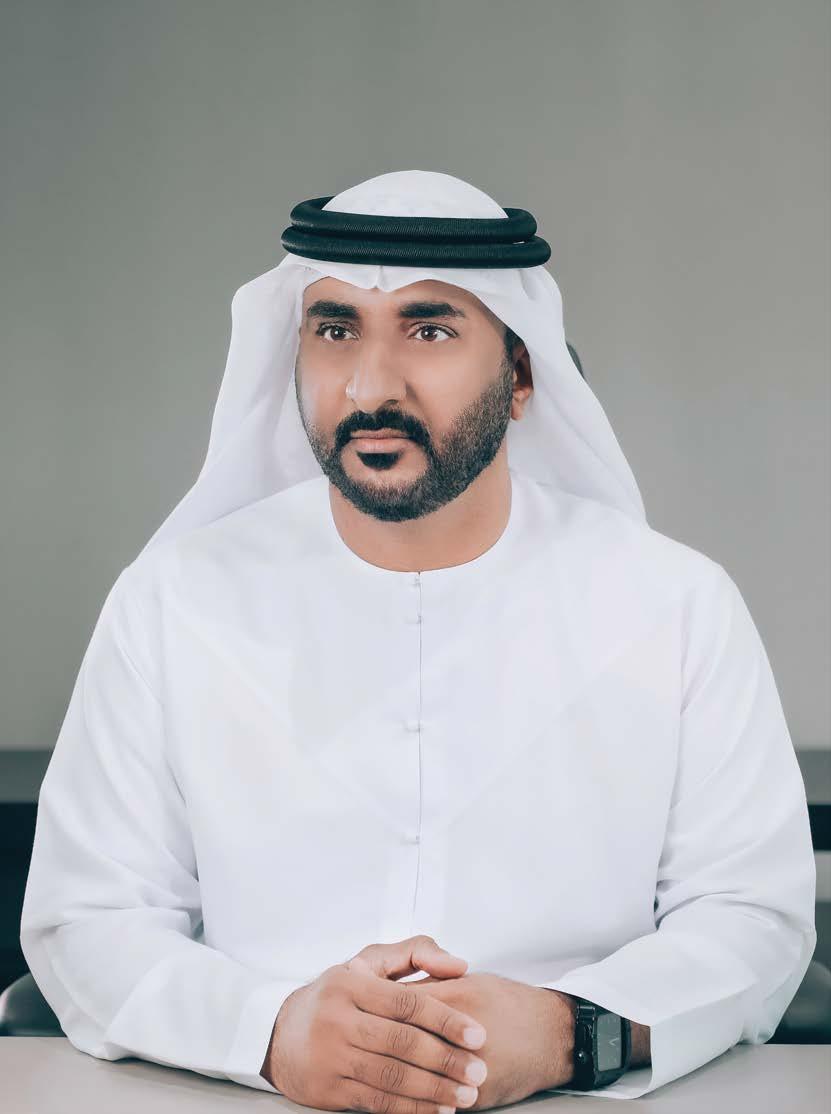
a&s Middle East: Y.E. thank you for this interview which will remain recorded as the first one for the a&s Middle East edition. Could you please, in the beginning, tell us what the mission of SIRA and its structure is?
Al Saleis: SIRA’s organizational structure comprises the Board of directors, the Executive Director - me, the Deputy Executive, the Investment Office, and the Legal Affairs office under the executive management office. The main departments facilitating SIRA services for companies and individual customers in Dubai are Licensing & Permits, Security Engineering, Metrology & Controlling, and Security Training Affairs. Additionally, we have three supporting departments: Strategy and Future Department, Corporate Communication Department, and the Resources and Support Department.
Our vision is to provide the security leadership for sustainable protection, prepare for the future and develop strategic and institutional plans, along with programs and industrial and investment projects, besides following their execution within a modern frame by the government and managing the institutional performance and professional auditing to reduce the external and internal as well as current and future risks and challenges.
a&s Middle East: How would you assess the awareness of the local society of the importance of encountering security threats and the need to be informed and knowledgeable about recognizing and fighting them?
Al Saleis: According to several studies, Dubai has gained a top world rank in safety and security. This didn’t happen in a vacuum. Security awareness and education among the society are part of this culture, so all groups of society are aware of how critical security is in Dubai‘s success in being a great city for living and an exciting destination for travel, and they are responsibly contributing to this by all means. But what is unique about Dubai as a cosmopolitan city that accommodates residents of more than 200 different nationalities is that we still strive to achieve a relatively high level of public awareness among our people, residents, and visitors, despite the diverse cultures and
mindsets, which is more challenging! Our society is well informed and aware of the security threats and instability impacts. Moreover, this is getting even better every day as we notice that incidents get reported by the public promptly, which indicates how conscious everyone is and how alert they are to any potential threats.
a&s Middle East: What steps have you taken so far to comply with international legislation, and in what areas do you think Dubai is ahead of other global countries?
Al Saleis: We constantly explore best practices through continuous collaboration with leading governmental and private parties, including legislators and regulators worldwide. However, I believe that we’ve gone a long way toward leading the security sector in the region, especially since Dubai is considered a fast-paced city and a welcoming business hub for global companies and investors, for which security and regulating laws are key to achieving this. SIRA‘s establishment was one of
the proactive steps to regulate the private security sector and promote more stability for businesses and residents. Also, our government considers the compatibility of legalizations and amendments for all stakeholders in different sectors. It sets extremely ambitious goals for government excellence and customer happiness, a unique approach in a sector like security. We are setting high-security standards in the sector. Our pioneering experience is commendable and inspiring for many other countries in Africa and Asia, which follow our lead in recognizing security threats and crimes and fighting them.
a&s Middle East: Are you satisfied with the agility of the Dubai Emirate Government legislators in keeping up with global technological achievements and rising threats?
Al Saleis: Certainly, as a security professional for over 30 years, I have witnessed how agile our leadership is in adopting the latest practices, technologies, and smart solutions to the security industry.

We are setting high-security standards in the sector. Our pioneering experience is commendable and inspiring for many other countries in Africa and Asia, which follow our lead in recognizing security threats and crimes and fighting them.
And despite several rising local and regional threats, Dubai maintained the highest security levels. This is an evidence-based achievement that we have proven to the world. I always see the Dubai government as a super powerful engine with a massive energy outcome, and it can only help moving forward if all parts are in harmony with the future requirements. We can confidently say that agile swift governance is one of the secrets behind the Dubai government’s exemplary accomplishment and success.
a&s Middle East: What local cultural specifics should Dubai society consider rethinking for more efficiency in facing current challenges?
Al Saleis: Security culture nowadays is different due to how people are more exposed to global happenings, especially with social media and the instant exchange of news and incidents around the world. We see this positively, we support resourceful knowledge, and we always encourage society to be more open to the world because we know that security challenges are increasing rapidly, and everyone needs to be well prepared with the right tools and information that suit their role in society.
a&s Middle East: Do you think currently
a&s Middle East: There is a global ultimatum to fill the gap in security staff demand. How is Dubai addressing this challenge?

Al Saleis: By establishing compatible legislation for security service providers and users and defining parties‘ responsibilities, Dubai creates an appealing environment for investment and business while protecting both parties‘ rights. Along with setting the qualification and training course requirements for each security position, aiming at a controlled quality of security staff supply in the market, SIRA has also paved the way for promising careers and hassle-free recruitment and hiring processes for companies in the private security sector. The digital adoption and automation of all applications, the use of the latest smart devices, and solutions to support security personnel and guards in managing their job responsibilities efficiently and diligently are all measures that we at SIRA implement and enforce in the private security sector. We have also set high specifications and regulations that security companies must comply with to ensure that a qualified security cadre is empowered and supported on-site to perform at its best.
operating security companies in Dubai are sufficiently equipped and using welltrained staff?
Al Saleis: Yes, without a doubt. Dubai is a dynamic city with busy public and business events and action agendas throughout the year. It requires highly trained and equipped companies to collaborate with government efforts efficiently and
according to their training outcomes. We have assessed this on the ground in many major incidents and happenings, including COVID-19 lockdown time, EXPO 2020, and the annual iconic celebrations of New Year’s Eve in Dubai, to name a few. As much as this sounds challenging, it is a great testament to how sufficiently equipped and efficient the security companies and cadre in Dubai are.
Having said that, SIRA has many certified security training centers across Dubai. They are in direct contact with the agency through regular meetings and events for support, feedback, and discussions on ongoing challenges. Both the Security Training Affairs Department and Metrology and Controlling Department of SIRA ensure they are equipped with the most recent curriculums and exam standards and supporting legalizations and that their performance is constantly monitored for guidance and rectification.
a&s Middle East: What areas should companies and bodies training security staff pay more attention to in the future?
Al Saleis: Apart from being up to date with the ongoing trends and latest releases in the global security sector, they should support the digital adoption approach of Dubai. They should be ready for the future of security training using technology-based tools such as advanced virtual training and AI in the security sector. We will always lead and support on that front as a regulatory agency.
a&s Middle East: What structural changes have SIRA undertaken to bring its policies to a higher level in the following period?
Al Saleis: We have reviewed our organizational structure and its context to meet the needs of the private security sector, as well as the alignment with the Dubai government‘s strategy and the highest efficiency business models. With the help of this strategic exercise, we have restructured the main and support departments within SIRA to reflect our services and provide specialized support and services to different businesses within the security sector. This has included new sections within the Licensing and Permits Department, as categorizing services based on customer type as Security Services Providers (SSP) and Security Services Users (SSU) or accommodating specific types of requests where we had a new section for Hazardous & Dangerous Good and another one for Permits and
Shipments. The Security Training Affairs Department was restructured to focus on two main support areas for the security training centers, the Curriculum, and Examinations Accreditation Department and the Department of Performance Measurement and Development.
We have also considered restructuring our services and upgrading them according to international standards, followed by rigorous quality control and assurance measures. This upgrade of the organizational structure is aimed at the development of policies and more directed initiatives and projects that are relevant to each segment or business, as well as the creation of a departmental workforce to align SIRA services and products with the government directives in terms of digitization, process automation, artificial intelligence (AI), and reliance on smart

Our society is well informed and aware of the security threats and instability impacts. Moreover, this is getting even better every day as we notice that incidents get reported by the public promptly, which indicates how conscious everyone is and how alert they are to any potential threats.
a&s Middle East: According to some research, over three billion dollars were lost to cyber-attacks on blockchain technology globally during the first ten months of this year. Is the Dubai Emirate considering cybercrime protection deep enough?
Al Saleis: Yes, to a great extent. Dubai has learned from global challenges and implemented strict digital control measures against cyberattacks and digital threats and was among the first countries in the region to issue e-crime laws. In 2014, the Dubai government proactively established Dubai Electronic Security Center (DESC), as the state’s specialized agency for cyber security. That is now under Digital Dubai Authority, fostering Dubai’s leadership in innovation, cyber security, and information protection from external threats.
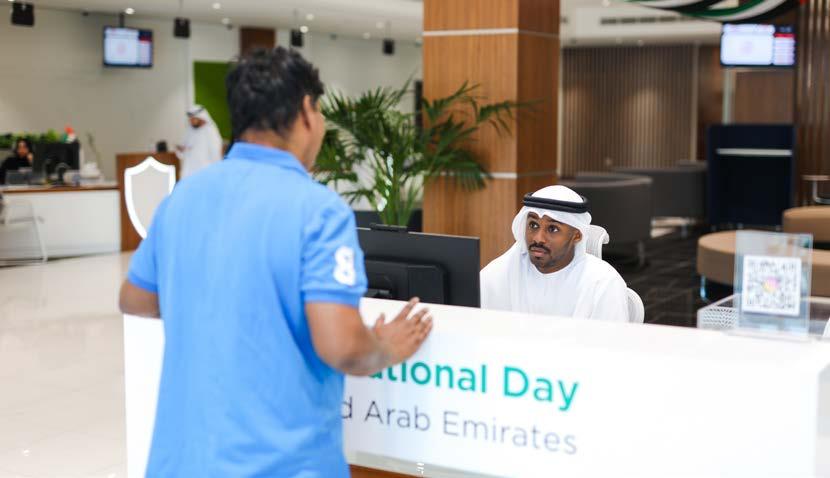

systems. This will eventually support the overarching goal of providing sustainable security services up to Dubai’s standards and positioning.
a&s Middle East: Do you think regulatory bodies can be one step ahead of „bad guys“ in the ongoing battles in domestic and global cyberspace?
Al Saleis: By exchanging experiences and best practices more frequently and holding security-specialized conferences and forums, leaders and professionals regularly gather for deep dive sessions and analysis of challenges and threats. This will eventually lead to the best cyber-security firms in the world developing innovative smart solutions. It is also important to raise awareness among
businesses and the general public about cyber threats and attacks and provide specialized technical channels for reporting cybercrime.
a&s Middle East: How would you assess the current collaboration level with other Gulf states on the security industry challenges?
Al Saleis: High level of collaboration as we exchange experiences and share best practices constantly on all levels. We have deeply rooted commonalities and consider the Gulf as one country or city. We share the same culture with the same interests and threats.
a&s Middle East: Finally, what will be the main focus of SIRA in 2023?
Al Saleis: SIRA’s priority is to adopt artificial intelligence (AI) technology in all private security sector businesses and its regulating laws and legislation. n














n Source: asmag.com
In last year’s Security 50, something unprecedented happened, with more companies –28 – reporting revenue declines than growth in the height of the pandemic. Things are different this year: a large majority of companies reported year-over-year growth in 2021 revenue, reflecting what the industry was like pre-pandemic.
“We have experienced phenomenal growth in EMEA both last year and in 2022. Still, it has been a relief for all of us in the security industry to come out of two years of COVID lockdown. Being able to meet partners and customers face to face has been vital for Milestone and our sales in the first half of the year,” said Jos Beernink, VP for EMEA at Milestone Systems.
The same sentiment is shared at Identiv. “Our growth and profitability are accelerating right into 2022, reflecting our continued leadership in specialty RFID applications for the IoT sector. We’re growing substantially faster than any of our segments which means we’re taking share from other companies,” said Steve Humphreys, CEO of Identiv. “Last quarter our RFID revenue grew 41 percent year-over-year. Our premises business grew 20 percent year-over-year. And our total revenue increase grew 16 percent year-over-year.”
Looking at this year’s Security 50, we can see the Top 10 companies remain somewhat consistent. The top 10 biggest manufacturers in video surveillance and access control (based on 2021 revenue of security product sales) is Hikvision Digital Technology, Dahua Technology, ASSA ABLOY, Axis Communications, Motorola Solutions, Uniview Technologies, Tiandy Technologies, Allegion, Hanwha Techwin and Aiphone.

Six companies are new entrants to Security 50 this year. They are: Dnake (intercom), Jovision (video) and EVETAR (lens), all from China; as well as Evolv, a U.S.based screening solutions provider; Ava Group, an Australian risk management solutions provider; and Webgate, a Korea-based video surveillance company.
Hikvision’s revenue in 2021 has crossed the ten billion US dollar mark, an increase of 16.9 percent compared to 2020’s US$8.64 billion.

“We believe that technological innovation is the key element for successful development of a tech company. Our innovative technologies, products and solutions are creating values for customers, and helping many different people and types of organizations increase safety, operational efficiency and sustainability. We are glad to see that customers demonstrate long-term trust in us in return, which supports growth of the company,” said Frank Zhang, VP of Hikvision Digital Technology.
He points out that some external uncertainties emerged over the past two years since inflation, interest rate hike, and exchange rate changes are now affecting growth of different economies. “Yet, Hikvision has successfully maintained product delivery efficiencies. And we have kept consistent investment in technology research and development, with the R&D spending accounting for over 10 percent of our total revenue in 2021. All these efforts ensured continued positive development of the company”, says Zhang.
For Chinese companies, a total of 15 are in Security 50 this year. Among them,
MOST OF THE COMPANIES ON THE SECURITY 50 LIST ACHIEVED SIGNIFICANT GROWTH IN 2021. HOWEVER, 2022 ENDS WITH THE SECURITY INDUSTRY BEGINNING TO ADDRESS ISSUES THAT POINT TO MAJOR CHALLENGES IN 2023.Security 50 2022: Top 10 manufacturers based on revenue
Hikvision, Dahua, Uniview and Tiandy are within Top 10. Most Chinese companies reported 2021 growth, indicating impacts from U.S.-led trade sanctions on Chinese goods were limited.
It’s interesting to note, however, that a lot of Chinese companies reported year-overyear revenue declines in the first half of this year. Hikvision, meanwhile, posted a total net profit of $848.6 million in the first half of 2022, down 11.14 percent from the first half of 2021, though its 2022 H1 revenue increased 9.9 percent y-o-y.
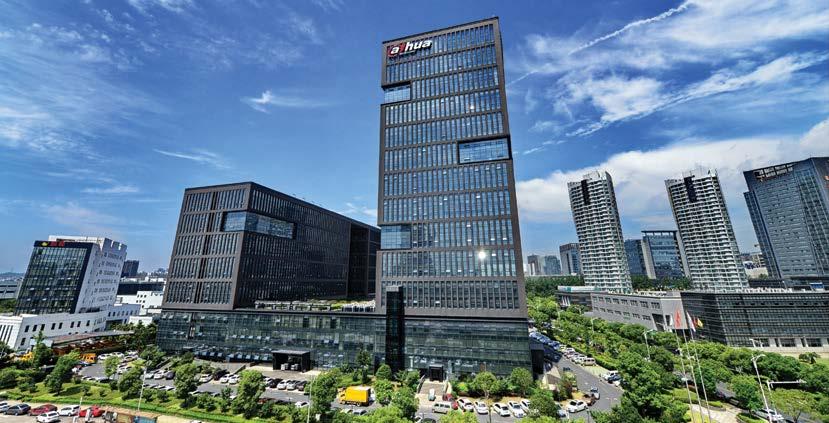
Yet this has more to do with China’s own domestic COVID and other issues, rather than the trade conflict itself. “Much of this is down to conditions in the Chinese domestic market rather than tariffs and trade restrictions in the US. The first half of 2022 has seen restrictions on movement in several major Chinese cities due to the COVID-19 pandemic. Government spending has therefore been diverted away from other areas and towards battling COVID-19 and supporting its economy during lockdowns,” said Josh Woodhouse, Lead analyst and Founder, and Jon Cropley, Principal Analyst, of Novaira Insights.
Speaking of the U.S.-China trade conflict, all eyes are watching whether Taiwan security makers have benefited. Upon an initial look, this is indeed the case as certain Taiwan companies, including Dynacolor, Hi Sharp and GeoVision, reported good growth in 2021. Yet given Taiwan manufacturers’ smaller scale and capacity, whether they can continue to benefit from OEM orders transferred from China remains to be seen. In fact, most Taiwan manufacturers have re-strategized to make niche, value-added
solutions in, for example, smart transportation, and that has been one of the contributing factors to their successes.
Looking back at 2021 and 2022, indeed growth returned to security due to an easing of the pandemic. “With more availability of vaccines and treatments for COVID-19, many businesses were able to start pivoting their business strategies towards creating a safe environment for employees and customers to return to physical spaces, while also maintaining (and even expanding) the remote solutions implemented during the height of the pandemic,” said Danielle VanZandt, Senior Industry Analyst for Security at Frost & Sullivan. “For many security technology markets, spending and investment opportunities returned back to their pre-pandemic levels, with some technologies witne-
ssing further gains due to ongoing digitalization initiatives—markets like biometrics, access control, video analytics, and digital intelligence all witnessed significant growth this year.”
“Across the global markets there is a solid underlying market growth … One driver for that is the overall increasing interest in security and network video solutions. Another driver is that of technology development. The demand for our products increases as we develop new and more innovative products and solutions to address customer demands,” said Ray Mauritsson, CEO at Axis Communications.
In total, 40 companies in this year’s Security 50 reported growth last year, with 28 growing by double to triple digits. The Top 10 companies in video surveillance and access control that grew the most in 2021 were: Evolv Technologies, CP Plus,

The world’s top ten companies posted mostly consistent results, with most Chinese companies also reporting growth in 2021
DynaColor, Webgate, Intelbras, Dongguan Yutong Optical Technology, Motorola Solutions, Gallagher, Hanwha Techwin and TVT Digital Technology.
It should be noted that Evolv, a provider of security solutions for weapons detection, reported revenue of US$21.77 million in 2021, compared to US$3.92 million in 2020. That’s a 455.98 percent year-overyear increase, primarily due to their efforts to add new customers and expand into key verticals and geographies.
These figures show the growth, strength and resilience of security companies during the various challenges brought by the pandemic. How did they achieve this?



Staying nimble and responsive amid adversity is critical. “All told, it’s been a very interesting past couple of years, first dealing through Phase 1 of the pandemic in 2020, and then phase 2 in 2021. It was our supply chain that got us through these years. We were able to get ahead of the shutdown and pre-order 4x our general monthly orders for our main suppliers once we heard the World Health Organization was in Wuhan, China, knowing how quickly China closes when needed. Two days after our orders were placed, the shutdown happened. So having inventory was certainly a major factor, as much as having production teams willing to be in our headquarters building products for customer orders,” said Jeff Burgess, Founder and CEO of BCDVideo.
Another key to growth is value creation for customers who can continue to stick to the supplier.
“With the growth of Dahua’s AI implementation ability and its continuous effort in exploring data value, the company has gradually expanded its business from traditional security to enterprise operation and management. By helping enterprises reduce costs and increase efficiency, the value of each client has been greatly improved. The company’s arduous effort in business has promoted the continuous improvement of each client’s value, which is a significant factor that drives performance growth,” said Fu Liquan, Chairman of Dahua Technology. According to Humphreys, a commitment to value creation is exactly the reason why the company achieved growth even amid the biggest global supply chain crisis seen in a
generation.
“The reality is that supply chain shortages haven’t been this bad since 1972. The RFID industry has predominantly been dominated by companies that just want to get a simple design and then crank them out in the hundreds of millions. From a business perspective that’s never been our position, partly because that’s not where the margins are,” he said. “When we go to market, the entire arc of the whole business platform is going in the direction of higher value add solutions. We are comfortable with long sales cycles. We understand customers aren’t even necessarily going to know what they can accomplish when they start out. We introduce a highly collaborative and educational selling process with customers,” says CEO of Identivo.
Closely related to value creation is technology innovation, which allows companies to deliver products/solutions required by users. “Identiv is designing and delivering next-generation solutions that are enabling the future of the IoT. We’re a technically deep company, which is helping us to get more market share. Technology touches people every day and it’s at our core and that drives across the premises business and the identity business, especially in RFID,” says Humphreys.
Looking into 2023, most companies expressed optimism growth will continue. “We are very bullish about the security market
For multinationals, respecting local laws and policies is key to ensuring growth in overseas business. “In the face of the current complex and changeable global political and economic environment, Dahua respects the laws, policies and customs of various countries and adopts the approach of ‘one country, one policy’ to meet the requirements of globalization compliance. The company continues to strengthen the strategy for the localization of overseas employees by building an international marketing and management team as well as localized marketing and service centers to further explore the global market. Globalization and the continuous growth in overseas market will also contribute to future business growth of the company,” says Fu Liquan.
Forty manufacturers from this year’s Security 50 list reported growth in 2021. Among them, 28 companies achieved double- and triple-digit growthJosh Woodhouse, Lead analyst and Founder, Novaira Insights Jon Cropley, Principal Analyst, Novaira Insights
because AI and Machine Learning open a whole new scale of possibilities, solutions, and integrations in and beyond security. At, for example transportation clients like airports, we see that our clients are enormously challenged to keep their operations running whilst challenged on employees and being confronted with much higher passenger quantity. This as an example drives demand for clever VMS security solutions. Security managers in our markets are challenged to do more with less resources. We at Milestone Systems have great solutions to fulfil that market trend,” says Beernink. “Over the past twenty years, we have been through tsunamis, memory factory fires in Japan, recessions, and presidential elections. As we continue to challenge ourselves to deliver more platforms to the market, such as the Q4 2022 release of our Allin-One NVR and Deepstor high-availability external storage, it will allow us to widen our brand globally,” Burgess said.
Despite the fact that the security industry is back on the path of growth, many still believe that in the coming years a series of challenges will ultimately cause some corrections that will affect this growth in the market.


“The world market for video surveillance hardware and software is forecast to grow 11.7 percent in 2022. It is forecast that


economic problems will impact both public and private spending on video surveillance equipment in 2023. At the same time, inflationary pressures will persist. The world market for video surveillance hardware and software is forecast to grow 6.4 percent in 2023,” Woodhouse and Cropley said.
“In the first half of the year, our overseas business still maintained a rapid growth, thanks to the company’s years of deeprooted overseas efforts. It also continued to promote business localization strategies, and improved the global supply chain and various supporting systems. Business opportunities in Asia-Pacific, Africa, Latin America, and the Middle East are relatively optimistic; but there are also regions with relatively weak growth. Overseas businesses will continue to face regional factors, inflation and other objective conditions, but the global market is vast, with opportunities and challenges coexisting, and there is still growth potential in the long run,” says Fu
Inflation concerns, supply chain challenges, and instability in global energy markets is all causing businesses to pause many new security investments until they can see what the final impacts could be on their budgets and bottom lines. This does offer opportunities for security vendors to work that much closer with their existing customers in order to identify ways that they can augment existing solutions already in use.
A surge in demand, as well as the aftermath of regional conflicts, have triggered a major supply chain crisis. This has also partially contributed to out-of-control, across-the-board inflation in a range of areas, from energy to food to consumer products. To curb inflation, interest rates have been hiked to the highest in years, raising the spectre of recession. Indeed, the world we
knew pre-COVID has changed, and, despite a return to growth in security, the abovementioned challenges bode not so favorably for the industry in the coming year.
As mentioned, the security industry is now faced with certain challenges, one being the worst supply chain crisis in decades. “As with many other companies, we have been affected by supply chain issues. Longer lead times led to slower growth than expected in 2020 and 2021. As we now are starting to see improvements in our supply chain, we are expecting to return to double-digit growth,” Mauritsson said.
Of all the component shortages, semiconductor shortages were particularly severe. This, then, has produced ramifications for security players. “Restrictions on movement
due to the COVID-19 pandemic caused a surge in demand for consumer electronics. People required laptops to work from home and for home-schooling and spent more of their income on home entertainment. All this equipment required semiconductors causing huge growth in demand for them. Video surveillance equipment vendors were just one group competing for supply of semiconductors,” Woodhouse and Cropley said.
“As far as components, one of the hardest hit technologies was in chips for any type of processor for analytics, intelligence functions, or edge capabilities. These were high in-demand solutions from all customers, so securing components in a timely manner became a key differentiator for projects pitched and won over the last year. Security vendors who were able to diversify their supply chains to secure these components and not feel the impact of adjusted logistical
Geopolitical conflicts in certain parts of the world have also taken a toll on security players. “The ongoing geopolitical issues that we see is of course causing concern and uncertainty. For instance, we have, as did many other companies, suspended our business operations in Russia due to the invasion of Ukraine,” Mauritsson said. The specter of potential new data privacy regulations globally also continues to impact many new analysis and intelligence capabilities across the security industry. Because of this, vendors must build any new solutions with the inherent privacy features already mandated in other regions or countries or have the inherent flexibility in their solution design that they can make quick changes in order to meet any new requirements put before them.
routes globally found themselves to be the ultimate winners,” VanZandt said.



Inflation is also now affecting a range of industries including security. “The price of video surveillance equipment is now being impacted by inflationary pressures in the wider economy. With utility prices, labor costs and raw material costs all rising quickly, video surveillance vendors will be forced to pass on cost increases to their customers in the form of equipment price increases. The average price of a network camera is forecast to increase in 2023,” Woodhouse and Cropley said.
Amid the price increase, security players had to re-strategize and think of ways to retain customers. “Inflation has caused costs to rise across the board and security technology components were not an exception to this. Many vendors and integrators did have to increase their prices in order to counter this, but they turned towards offering more flexible payment models for customers, as many projects did have longer timelines than they typically would,” VanZandt said, adding much of the industry focus has turned towards enhancing the overall customer experience including offering more personalized service models.
As for security trends for next year, AI, edge computing, cloud and cybersecurity will continue to dominate. Meanwhile, multi-dimensional perception will be another development to look for.
“From Hikvision’s perspective, multi-dimensional perception will be another big trend that will enable the security industry to go to the next level. Beyond visible light imaging, we see more perception capabilities, like radar, thermal imaging, x-ray screening, temperature measuring, humidity sensing, and gas leak detection that are being added to security devices and systems, making them more powerful. We are extending our machine perception technologies to the full electromagnetic spectrum, and have developed innovative products and applications that pick up X-rays, infrared rays, millimeter radar waves, sound waves, and temperature variations,” says Zhang. n
Inflation concerns, supply chain challenges, and instability in global energy markets are all causing businesses to pause many new security investments until they can see what the final impacts could be to their budgetsRay Mauritsson, CEO, Axis Communications

CHINA’S LEADING VIDEO SURVEILLANCE GIANTS HAVE BECOME INCREASINGLY DEPENDENT ON FOREIGN MARKETS. IN TERMS OF GLOBAL REVENUES, GIANTS HIKVISION AND DAHUA TECHNOLOGY HAVE RETAINED THEIR DOMINANCE THROUGH 2022, REPORTING STRONG OVERSEAS SALES GROWTH IN H1 2022, AND GENERATING REVENUES OF OVER $16.7 BILLION IN 2021.
cal to ongoing innovation between the two nations, as well as the ability of their respective manufacturers to trade in their respective markets.
The future growth of Chinese security companies is, however, threatened by a combination of weak domestic demand, ongoing trade tensions between China and the West, and a weakening global economic outlook. Tensions over alleged human rights violations and the ongoing trade war between China and the U.S. has seen continued legislative moves, new sanctions, and tit-for-tat trade barriers erected that have hugely disrupted the flow of both physical security products and key product components criti-
Furthermore, the recently announced US government export restrictions imposed on leading chip designers NVIDIA and AMD will stymie China’s ability to costeffectively carry out the kind of advanced computing required to remain competitive in the fields of computer vision and natural language processing AI.
Restrictions on Chinese physical products sales to particular market verticals
The future growth of Chinese security companies is, however, threatened by a combination of weak domestic demand, ongoing trade tensions between China and the West, and a weakening global economic outlookn Author: Owen Kell, Senior IoT & Security Analyst, Memoori Research
(or indeed a total bar on sales of all of a particular company’s technology) continue to increase not only in the U.S., but also in other Western nations, and it seems that the geopolitical and trade tensions are set to get worse before they get better. Chinese chipmakers are not yet capable of replicating the performance of these advanced NVIDIA and AMD chips, so as a result, Chinese AI researchers may be forced to revert to using multiple lower-end chips to replicate the processing power.
After several years of false dawns and overhype, AI-enabled solutions have become increasingly commercially viable in the physical security space. The pace of change over the past 12 months has been particularly remarkable, with new research papers that push the boundaries of what is possible being released on virtually a weekly basis.
We have observed significant improvements in terms of the speed, accuracy, and cost of machine-learning solutions for practical applications in securityrelated fields including complex facial recognition, cutting-edge video surveillance scene processing, audio analytics and robotics/drones, to the extent that leading AI algorithms in several areas now far exceed human capabilities for several use cases. While the most advanced AI relies on significant computa -

There are several trends that we believe will continue to significantly impact the market for physical security. Ongoing global supply chain woes will continue well into 2023, impacting stock levels, price inflation, and component availability. The blurring of the lines between cloud and on-prem physical deployments will continue as increasing numbers of end users embrace hybrid deployment models for at least part of their security solution. In the end, we can see a rise in demand for security systems integration and interoperability for better reporting and control of other building/business functions for applications including occupancy analytics, energy efficiency, and improving the employees or tenant experience. The ideas presented in this article draw on the findings of several recent Memoori research reports into cybersecurity for smart buildings, IoT in smart buildings, and AI applications for smart buildings.
tional power and processing capability, a combination of improved edge processing capabilities at the device level and flexible access to increasingly affordable cloud-based computing resources now make accessing these innovations a viable option for many firms.
The race is now on between vendors to integrate next-generation AI-enabled security functionality into end-user-focused applications in a way that facilitates ac-
cessibility, practicality, and ease of use for everyday security scenarios. AI is increasingly replacing the manual effort required for some roles, with data interpretation that formerly required human input now being handled algorithmically, automating processes or steps to make managing security that much easier. For security staff, this will lead to a reduction in the amount of time spent monitoring screens or watching out for
AI is increasingly replacing the manual effort required for some roles, with data interpretation that formerly required human input now being handled algorithmically, automating processes or steps to make managing security that much easier
alarm notifications, and more time spent conducting higher-value work. AI will be leveraged to help analyze, evaluate and prioritize data feeds, and then provide real-time prioritization and recommendations on security issues requiring the attention of the security staff. Making this kind of AI functionality accessible to security professionals will also require integration of AI/ML tools into existing software and platforms in a way that minimizes the need for coding or technical expertise to operate, as well as providing accessibility through multiple media including handheld devices.
Smart buildings are experiencing an explosion in the volume of IoT devices being deployed, as well as ever-increasing levels of convergence between IT and OT networks. These factors, combined with the growing sophistication of malicious actors and increased reliance on cloud services mean that smart buildings are becoming increasingly vulnerable to cyberattacks. The last 18 months have seen a huge rise in ransomware attacks, as well as rising costs per incident of cyberattacks on businesses around the world. All too often, IoTenabled building automation or physical security systems have acted as the “soft underbelly” of organizational cyber defense, with multiple high-profile cases of security breaches serving to highlight the risk and vulnerabilities posed.

At the customer level, awareness of cyber risk, cost implications, and even the adverse effect of cyber risks on building owners/operators’ ability to effectively insure their buildings is steadily increasing. We have observed increasingly strict cyber policies adoption among more sophisticated clients over the past year to mitigate these growing threats, with many companies adopting a “Zero Trust” approach to network architectures, as well as continuous verification as well as investments into systems hardening. Here again, AI will also play an increasing role - both in cyberattacks and cyber defense.
Memoori’s recent report into AI & Machine Learning in Smart Buildings found that AI tools and building blocks for launching an offensive AI-driven cyberattack have already been developed
by bad actors, with several incidents identified by researchers indicating that AI had been used to execute attacks faster or to gain deeper access into a system. In terms of protecting against the threat, AI is increasingly being deployed to provide cyber-risk analytics for improving organizational resilience and understanding cyber risk by improving threat intelligence, prediction, and protection as well as enabling faster attack detection and reducing the need for human cybersecurity experts.
As demonstrable cybersecurity capability moves from being a “nice to have” to a “must have” in the eyes of an increasingly cyber-conscious customer base, security solution vendors seeking to differentiate themselves will need to invest in areas including security by design, gaining cyber certification, demonstrating cyber standards compliance, and independent testing and validation of their products to help differentiate their offerings. n
Smart buildings are experiencing an explosion in the volume of IoT devices being deployed, as well as ever-increasing levels of convergence between IT and OT networks. These factors, combined with the growing sophistication of malicious actors and increased reliance on cloud services mean that smart buildings are becoming increasingly vulnerable to cyberattacks.

VIDEO SURVEILLANCE IS A KEY ELEMENT IN SECURITY. SO HOW HAS THE VIDEO SURVEILLANCE MARKET FARED RECENTLY, AND HOW IS IT EXPECTED TO PERFORM IN THE YEARS TO COME? ASMAG.COM SPOKE WITH JOSH WOODHOUSE, LEAD ANALYST AND FOUNDER, AND JON CROPLEY, PRINCIPAL ANALYST, OF NOVARA INSIGHTS, WHICH RECENTLY RELEASED A VIDEO SURVEILLANCE MARKET REPORT.
n By: William Pao, Senior Reporter, asmag.comAccording to the report, “The world market for video surveillance hardware and software,” the global video surveillance market grew by 16.4 percent in 2021. An easing of restrictions on movement and efforts to meet pent-up demand post-COVID were cited as some of the key growth drivers. Indeed, amid project resumptions and construction booms in various parts of the world, a continuation of growth in the video surveillance market is all but expected.
However, the report cited the global average price of a network camera increased by over 7 percent last year, making 2021 the first year in which the global average price of a network camera increased rather than decreased. A main reason cited by the report was a shortage of components used for the production of video surveillance equipment, resulting in higher prices for those components; this then forced video surveillance equipment vendors who were unable to absorb such cost increases to raise the prices of their own equipment. Especially, vendors were faced with a shortage in semiconductors, which are the basis for image signal processors and SoCs that are key components in IP cameras.
“A shortage of semiconductors was particularly problematic. However, there were also shortages of resistors and materials such as some plastics and metals,” Woodhouse and Cropley said, adding that the CHIP Act recently signed into law in the United States may improve the chip shortage situation somewhat, but not anytime soon. “It is likely that the CHIP Act will lead to greater production of semiconductors in the U.S. in the longer term. However, it will take years for new production facilities to be built and for volumes to ramp up,” Woodhouse and Cropley said. According to both, general inflationary pressures will force vendors to increase prices yet further in 2022 and 2023. This, then, is expected to produce an impact in the video surveillance
market. “SIs and end users will purchase fewer surveillance cameras than they would do if prices weren’t rising. This will mean that camera unit shipment growth will be lower in 2022 than it was in 2021. Growth will then be even lower in 2023 than it was in 2022,” Woodhouse and Cropley said. “The global average price of a network camera and an analog camera is forecast to fall again in 2024. However, a more prolonged period of high inflation presents a serious risk to this forecast.” As for next year, the report said the global video surveillance market for hardware and software is forecast to grow at 11.7 percent in 2022 and will be worth an estimated US$28.2 billion.
Technology-wise, a gradual trend to using the cloud for video surveillance also continued in 2021, particularly in the Americas region where the market for cloud video management software exceeded $150 million, the report said. Especially, the report found the United States has been quicker to adopt cloud for video surveillance than most other countries in the world. “A major factor is that it has many organizations with distributed sites, each with a small number of cameras. Furthermore, these organizations operate in a large country using a common language and a common set of rules on data residency, privacy etc. Bandwidth availability and cost have been more favorable than in some other countries too,” they said. n
OSSA ORGANIZATIONS SPECIFIED HARDWARE AND SOFTWARE CONDITIONS TO MAKE IT POSSIBLE TO RUN THIRD-PARTY (AI) ANALYTICS APPLICATIONS SECURELY ON EXISTING, BRAND-AGNOSTIC COMPUTER VISION DEVICES (STARTING WITH CAMERAS). WORKING TOGETHER SPURRED A HANDFUL OF SPECIFICATIONS FOR BUILDING COMMON COMPONENTS THAT CAN BE UTILIZED JOINTLY.
EK – and together are determined to continue bringing forth an open, data-driven ecosystem.
ket as a whole so that there will be headspace to grow for all participants.
Open Security & Safety Alliance (OSSA) is a collaborative initiative focused on creating a framework for standards and specifications in the security, safety, and building automation space. As an industry alliance, OSSA has a good idea of what’s in the works by its members when it comes to innovating across important areas within security, safety and beyond. OSSA representatives hail from some of the most influential companies in this space – such as Bosch, Hanwha Techwin, Milestone Systems and VIVOT-
The IoT is all about connecting things to make life easier, more intelligent, more intuitive, and more productive. OSSA workgroups have projects underway that are primed to unify and elevate the mar-

Already, OSSA organizations specified hardware and software conditions
The IoT is all about connecting things to make life easier, more intelligent, more intuitive, and more productive. OSSA workgroups have projects underway that are primed to unify and elevate the market as a whole so that there will be headspace to grow for all participants.
to make it possible to run third-party (AI) analytics applications securely on existing, brand-agnostic computer vision devices (starting with cameras). Working together spurred a handful of specifications for building common components (e.g., for core system requirements, cyber security directions, and application interface APIs) that can be utilized jointly.
Now, a notable future trend our members are funneling expertise into is bringing about new levels of data and information sharing to all we do when it comes to smart cameras and related IoT devices. How can we achieve nextlevel dissemination of extremely valuable data flows sensed by products that collect data in their brand-specific siloes? How do we establish open but secure pathways to easily share and uniformly interpret data to connect the dots when it comes to surveillance and activities being captured and contained on edge-computing devices?
Millions of “things” generate, accumulate, and house heaps of factual insights that – unfortunately all too often – remain untapped and stagnant once recorded. If corralled, connected, and optionally given an artificial intelligence/
Imagine harnessing content from a camera that captures a car and applies its license plate app to read the details. This car crosses in front of the building, and minutes later another camera across the facility records an individual scaling a fence in the vicinity where the car was last detected. Finally, a third camera on the opposite side of the building records an individual onsite in an unauthorized area, and an open platform app detects a gun in hand. The system immediately then alerts security personnel about a potential threat. Tying this crucial information together seamlessly across a natural path of data flowing from security and safety devices takes us to a new frontier delivering not only what’s “seen” but more importantly what’s “sensed.” This is the future if device manufacturers and other stakeholders participate in an industry-driven ecosystem.
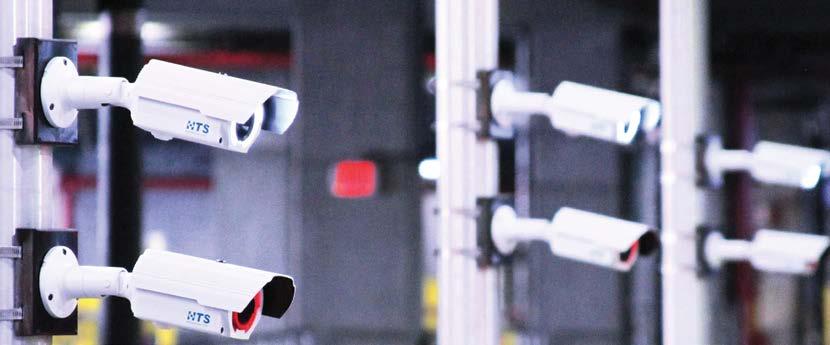
ML scrub, this information brings a bigger picture of what transpired across, for example, surveillance systems. Taking frames or moments from various devices and drawing relationships between them to form a cohesive “data flow” opens up a massive new corridor of IoT-based possibilities.
OSSA members are working on a set of generic, vendor-neutral data Application Programming Interfaces (APIs) to enable this type of uniform consumption and data interpretation across cameras or computer vision gateways in adherence with OSSA standards. It is also designed to apply across other device types within the IoT security and safety domain to provide a loose coupling between any
pair of send/receive applications that collect, digest, and interpret data. Enabling content from various brands and device types to be interpreted in an open forum brings newfound levels of storytelling and safety to our security situations. Coupled with the progress that continues around allowing for easy integration of third-party AI analytics applications on “Driven by OSSA” video cameras and gateways in an agnostic fashion, OSSA facilitates cooperation on many levels. There’s a front-row seat for anyone interested in expanding this collaboration framework to together lift our industry to new levels of openness, innovation, interoperability, and success. n
THE KINGDOM OF SAUDI ARABIA IS PLANNING SOME OF THE MOST EXCITING AND AMBITIOUS INFRASTRUCTURE PROJECTS IN THE WORLD, WHILE HEAVILY INVESTING IN SMALLER PROGRAMS ACROSS HOSPITALITY, RETAIL, BANKING, AND GOVERNMENT SECTORS. THE SAME IS TRUE IN THE UAE AS WE CONTINUE TO SEE NEW LANDMARK MULTI-USE DEVELOPMENTS, WHILE THE ADOPTION OF AI IS STARTING TO REACH MATURITY
n By: William Pao, Senior Reporter, asmag.com editorial@asmideast.comNorth America suffered great losses during the height of the pandemic but the security industry is recovering. The North American region has experienced pent-up demand for security technologies. Early in the pandemic, we saw a reallocation of funding from security to other facility needs. Now, we see end users looking

to secure their facilities with the newest technology.
Amid growth in the North American market, there are uncertain factors that may affect future growth prospects. Among them are supply chain issues that have suffocated the entire world – North America, including vendors’ ability to deliver go-
ods in time despite component shortages and logistics issues. There were also certain positive effects coming out of supply chain issues. The supply chain issues that the world has been experiencing have encouraged businesses to be less dependent on single-source, proprietary solutions. Forward-thinking organizations have instead sought open-architecture solutions that offer them increased choice and flexibility based on requirements and current availability. Closely related to supply chain issues
is inflation where a price increase is seen in various products, including security. The uncertain factors are expected to remain in North America. Yet security players are cautiously optimistic about the market. While external/internal challenges remain, security will always be a necessity, especially in a country like the U.S. where security and safety issues are always a concern: in 2022 alone dozens of mass shooting incidents occurred – the most severe being the high school shooting in Uvalde, Texas where 22 were killed.
Heading into 2023, the security market is expected to continue to grow in North America as a result of pandemic tailwinds and technology advancements, as well as an unfortunate number of critical threats taking place in 2022 alone. Security will remain a top priority across all sectors, and business and security leaders must see that. They are finding ways to implement, integrate, or upgrade security systems to optimize protection — and they can turn to experts to help them accomplish this quickly and efficiently.
EMEA’s security industry generally performed well this year on various positive factors. “The EMEA region has been performing well for Bandweaver and probably only second to Asia in terms of revenue generated. There was strong growth in the telecoms and utility sectors and of course, the oil and gas sector remains strong as the price of crude oil has recovered strongly from the crash of 2020. Demand from the EMEA region remains high
The Middle East is expected to fare well, too. “Europe is looking at an impending recession that could also impact tourism and business travel across the region. Yet the opposite is true in Turkey, with the weak Lira boosting tourism with visitors flocking to its beaches and cultural landmarks, eating world-famous cuisine, and going on shopping sprees in its bustling retail areas and historic bazaars, resulting in demand for improved surveillance in the retail and hospitality sectors.” Choi said.
“The Kingdom of Saudi Arabia is planning some of the most exciting and ambitious infrastructure projects in the world, while heavily investing in smaller programs across hospitality, retail, banking, and government sectors. The same is true in the UAE as we continue to see new landmark multi-use developments, while adoption of AI is starting to reach maturity.”
market have good growth prospects,” said Thomas Lausten, CEO of MOBOTIX.




as we look towards 2023 with continued investment in the region,” said Mark Horton, VP of Bandweaver Technology. “While COVID was still an issue in some countries at the beginning of 2022 – depending on the incidence – the Ukraine war triggered some uncertainty in the markets from the end of February 2022. Nevertheless, it was clear that security – physical or digital – is increasingly a topic of the future and that the companies operating in this
Technology-wise, AI and cybersecurity continued to dominate security in EMEA. “Security in EMEA in 2022 saw many organizations embrace artificial intelligence (AI) and associated technologies like deep learning and machine learning. „We see cybersecurity and AI in particular as general growth drivers in the market. On the one hand, it has become clear how important cyber-secure infrastructures are, and on the other hand, AI-based solutions are opening up entirely new, forward-looking security solutions that are convincing on the market,“ Lausten said. Banking, meanwhile, was robust in the Middle East. “In the Middle East, we saw continuing high demand in the banking and finance sectors, as institutions pushed ahead with upgrading their video capture, storage capabilities, and centralized monitoring capabilities in compliance with the stringent regulatory standards which have been driving the market for the last four years,
The
issues that the world has been experiencing have encouraged businesses to be less dependent on singlesource, proprietary solutions.Mark Horton, VP, Bandweaver Technology Thomas Lausten, CEO, MOBOTIX Dennis Choi, General Manager, IDIS Middle East & Africa
most notably the SAMA regulations. Our largest banking customer in The Kingdom of Saudi Arabia continued to upgrade newly acquired branches, traditional ATMs as well as drive-through ATMs that are important for so many consumers,” said Dennis Choi, GM of IDIS Middle East & Africa.
However, challenges remain in the EMEA market, where supply chain issues, rising costs in everything, and the war in Ukraine continue to influence security and user habits. At the same time, inflation, in the form of rising costs in gas, rents, mortgages, food, and energy, is affecting EMEA as it does the rest of the world, and security may be affected. Across all industries, inflationary pressures are impacting raw materials and energy costs. Some of the larger manufacturers can absorb some of this cost so there isn’t a huge price increase for their products. Being agile, buying materials in bulk, and having the ability to redesign if a raw material rises significantly in price will also help to address this.
As for next year, growth is expected to continue. “We anticipate that growth will be at least the same as before the COVID era,” said Tomáš Vystavěl, Chief Product Officer at 2N. “The growth will be driven especially by mobile access. But not everybody is ready for the change from RFID. The answer
might be multi-technology readers that combine two or even three access control technologies in one device (Bluetooth, RFID, keypad).” Yet it’s still a bit premature to assume that everything will be smooth sailing, considering the aforementioned negative influences will continue to dim growth prospects in EMEA security.
Overall, the Asian economy had a good 2022. According to the International Monetary Fund, Asia as a whole is expected to see GDP growth of 4.9 percent in 2022. Within the region, advanced Asian economies are expected to grow an average of 2.7 percent, while emerging markets are expected to grow 5.4 percent, IMF said. This, then, has contributed positively to security in markets across the region. „After
a couple of slower years during the pandemic, the security market picked up pace in 2022 following the ease of travel restrictions and pandemic prevention measures,” said Tony Wang, CEO of Convergint APAC. „India’s electronic security market was valued at around US$1.3 billion in 2021 and has seen a steady growth continuing in 2022; overall, the industry is growing at a CAGR of 19-20 percent,” said Aditya Khemka, MD of CP Plus.
While COVID remains a health issue in various Asian countries, its impact on security is diminishing as businesses reopen and projects resume. “During the COVID lockdown periods, there was an impact, which was primarily due to no deployment and installation being possible. However on opening the demand more than bounced back,” Khemka said. “The aftereffects of COVID will still be there, but to a minimal impact as the majority of markets have opened up,” said Ian Foo, Business Development Director of Malaysia-based Melectron. “End users and mid-tier projects are still our main driven sales, so when there is a need from clients, definitely they are willing to spend on security.”
It should be noted, however, that the range of cyber threats is growing, and Asia is no exception. “Cybercriminals are as businessminded as ever and employ more advanced tools and technologies,” said Amit Kulkarni, EVP of Cybersecurity at Allied Digital.

Growth of the security industry is expected across Southeast Asia and India, as enterprise customers continue to invest and expand in these markets.
“Most CEOs believe they are adequately ready for a cyberattack. A cyber incident of some kind is viewed as inevitable for almost every firm. Security teams must be ready to respond, recover from, and re-establish confidence as soon as possible to minimize the harm from cyber events, which are becoming more and more inevitable.”
A key growth driver in the region’s security market is smart city and infrastructure development. Among the more notable infrastructure and smart city projects in Asia now are Phase 1 of Shanghai Metro Line 21; Hai Lang LNG Gas Power Center in Vietnam and the M4 Smart Motorway Project in Australia.
India also has their share of projects that can benefit security. “India is focusing on ambitious smart city projects and stimulating the transport infrastructure, meaning that all these new infrastructures are deploying security cameras, which has been augmenting the market growth for us,” Khemka said. “Many state governments in India are also playing a vital role by adopting video surveillance equipment to improve security and safety. Many states have incorporated advanced video surveillance solutions in their cities in 2022. For example, the Telangana Government is currently focusing on improving surveillance on the streets to upgrade Hyderabad’s safety, which is already the most surveilled city in the world.”
Inevitably, the global supply chain issue has affected Asia as well. As a result, shor-


“The issue of insufficient IT infrastructure and cyber security supply has been prolonged to 2022 and I predict it will extend till 2023. Chipsets and semiconductors were hard to obtain as a result of the trouble, which resulted in delays of more than 400 days in delivery. There were numerous other issues besides pure chip supply chain problems, such as restricted Chinese companies. Freight prices rose because of logistic problems, causing manufacturers to increase the end consumer price,” Kulkarni said. “It appears that things will gradually improve, but there are still plenty of backlogs left from previous orders that may take up to 8-10 months to be delivered.”
tages and price increases for security equipment were seen. Fortunately, vendors and suppliers showed resilience and flexibility to stay afloat.
“The supply chain issue has had a significant impact on the security industry across APAC and continues to be very challenging. Moreover, the issue is not only the surrounding shortage of components and equipment but also difficulties in terms of logistics. This is a real challenge for all producers and service providers,” Wang said. “In Convergint, we try to take a proactive approach and emphasis cross-regional collaboration, extensive communications, and ecosystem management to drive better results.”
As for 2023, Asia security is also seen with optimism. “I expect growth in the security industry across Southeast Asia and India, as enterprise customers continue to invest and expand in these markets. Oceania and Japan will also see growth,” Wang said. “I foresee an average growth rate in the APAC security
market in 2023 of around 20-25 percent, but this will vary significantly between different vertical markets. Some of this is fed by mandatory demand, such as major critical infrastructure projects, as well as a backlog of projects which were postponed or delayed due to the pandemic.”
“The rapid growth that the security and surveillance industry is currently witnessing will continue shortly. With wider adoption and aggressive uptake in the consumer segment and large infrastructure roll we will be able to easily sustain the projected industry growth rate of 20 percent-plus,” Khemka said.

“For the whole Malaysia market overall, as long as new businesses are opening up, there will always be a demand for security products. With 5G rolling in soon in Malaysia, we might see an increase in higher specs of security products overall in the Malaysian market. But we still need a younger generation of users to be able to absorb all the new tech gadgets as they are the new market which is most likely to make use of what latest security products we have,” Foo said. n



ALTHOUGH MANY CRITICIZED FIFA’S DECISION TO ENTRUST THE ORGANIZATION OF THE 2022 FIFA WORLD CUP TO A SMALL DESERT COUNTRY WITH MARGINAL SPORTS HISTORY IN THE MONTH OF DECEMBER (A PRECEDENT IN ITSELF), THE WORLD CUP IN QATAR TURNED OUT TO BE THE BEST ONE SO FAR. FANTASTIC FOOTBALL WAS WITNESSED, THE MATCHES WERE VISITED BY RECORD NUMBERS OF SPECTATORS, AND THE FEWEST SECURITY BREACHES AND PROBLEMS WERE RECORDED. HOW DID THE HOSTS DO IT?

To better understand what a small Gulf country covering an area five times smaller than Bosnia and Herzegovina managed to achieve on a global scale, we must tell the story of the FIFA World Cup in Qatar from its beginning. To the surprise of many, Qatar won the bid to host the popular World Cup in 2010. FIFA’s decision to allow this country to host one of the largest global sports events caused many negative reactions and controversies, since Qatar is situated on the Arabian Peninsula, where daily temperatures reach over 50 degrees, and the country does not have a developed football infrastructure. It was decided that the World Cup must be played in December, which is a precedent in itself because it requires changes in the organizations of all football associations participating in the championship. Following this, the dissatisfaction in the global sports community culminated soon afterward. Some claimed that it was impossible to hold such an event in the desert, that, because of this, Qatar would not receive visitors, that the infrastructural problems were insurmountable, and that the safety of the visitors would be jeopardized.

In short, a total collapse of the organizer’s endeavors was almost called for. Lawsuits were even filed, demanding the annulment of the decision and the reallocation of the hosting rights to a European or another country. “Qatar is a mistake. It is too small of a country. Football and the World Cup are too big for it,” said Sepp Blatter, former president of FIFA. “To be clear once again, Qatar is a mistake and the choice was bad,” Blatter said just a few days ahead of the start of the Cup. Without going into how Qatar really won the organization of the event and whether there was alleged vote buying in the Organizing Committee for the selection of the World Cup host, now that the curtain has come down on the World Cup, one thing must be said - Qatar won, plain and simple! And that goes for every aspect. A complete outsider managed to organize the best, most interesting, most visited, and safest World Cup in history, thus shutting the mouths of all critics, and putting itself on the global map of the most prestigious and most desirable tourist destinations. In the following article,
we will try to explain what the hosts did in order to achieve this success, primarily with the most important aspect of the event from our point of view – its security.
To host the FIFA World Cup, seven attractive stadiums were built from scratch alongside one sports facility which was refurbished. The road, railway, and airport infrastructure was either improved or built from scratch, more than 15,000 surveillance cameras were installed, and many innovative security solutions were applied in the field of access control. Finally, a veritable small army of security guards and other workers was hired. The number of visitors was truly impressive and exceeded one million, while almost 3.4 million tickets were sold. All of them could enjoy stadium amenities the likes of which the world has never seen before – these being luxuriously equipped facilities with air-conditioned stands. Despite a large number of guests, the World Cup took place in a completely safe environment, where no serious security incidents related to terrorism, hooliganism, fan rampage, or public drunkenness
were recorded. This was largely helped by the restricted distribution of alcoholic beverages during the event. Word has it that Qatar spent about 200 billion dollars on the organization of this event. Anyway, the investment was totally worth it. It should also be mentioned that the record for the most watched online sports broadcast event in history was also broken in Qatar – the final match between France and Argentina was watched by more than 2.5 billion people worldwide.
It is generally known that the organization of major sporting events such as the FIFA World Cup or the Olympics is the most complex security operation. Within their scope, security has become one of the most important factors of entire projects and, as such, is absolutely essential for their success. How important this segment is can be gleaned from the examples of earlier events, such as the Olympic Games in Sydney whose security budget amounted to about 200 million dollars. Today, these amounts are much higher and are measured in billions. “The evolution of

A complete outsider managed to organize the best, most interesting, most visited and safest World Cup in history, thus shutting the mouths of all critics and putting itself on the global map of the most prestigious and most desirable tourist destinations
risks dictates that, in terms of security, each subsequent FIFA World Cup grows in its complexity, which is also confirmed by the key security studies. More than one billion US dollars was spent on cyber security alone. When assigning the hosts of such competitions, what’s analyzed is the probability and frequency of terrorism in the host country, the level of crime and other public security issues, the technical and professional competence of the security forces, the level of complexity of the required security operations and the capacity of the host to respond to security issues of a varied origin. Therefore, at such events, a formal institutional organization of security is essential,” says dr. Luka Leško, the Director of the College of Occupational Safety and Health in Croatia. According to him, since the event was entrusted to Qatar in 2010, this country has focused on improving its policing practices in general. “Qatar has signed memorandums of understanding with Turkey, France, the United States, Morocco, Pakistan, and the United Kingdom, among others, to provide security equipment and personnel and study examples of good practice. It has also partnered with Interpol, the International Center for Sports Security, and Europol. The latter conducted training for security personnel to deal with possible crisis scenarios, and the so-called Operation Shield to protect airspace and territorial waters from terrorist and other threats was also organized,” says Leško. Thus, before the start of the championship, the Qatari security forces conducted a five-day nationwide exercise called “Watan”. During the World Cup, these forces numbered 32,000 soldiers and policemen and 17,000 security guards, together with partners from 13 countries. The purpose of the exercise was to check the readiness to respond to emergencies. How successful its preparation was is best shown by the results after the end of the World Cup, where only a single minor incident was recorded in the fan zone following a scuffle between fans of Argentina and Mexico.
Video surveillance cameras installed in stadiums and access streets in Doha and other cities were equipped with facial recognition technology. Researchers from Qatar University developed surveillance systems that use drones that can estimate the number of passers-by on city
The SecurOS Under-Vehicle Surveillance (UVSS) solution from ISS has been used to protect stadiums and other facilities and public spaces across Qatar. In partnership with local integrator Gulf Networks Security Solutions and a large on-site technical team, ISS deployed 40 UVSS units at vehicle checkpoints for eight stadiums, three logistics zones, and fan zones in and around Doha to protect visitors and make the vehicle inspections safer, faster and more efficient.

streets. All data and footage were sent to the Aspire Control Center, which Qatari officials developed as a headquarters to monitor gate security, transportation systems, and service activities at stadiums and city streets. This center acted as the technical hub for the event itself, where all operations for the eight stadiums were centralized thanks to a single platform that connected them. Equipped with numerous large screens and video walls, the center could easily remind one of the control rooms of the famous NASA or Space X agencies. Its space was filled with ELITE consoles specially designed to accommodate various equipment and monitors. The command center also had a genuine crisis management room equipped with ELITE MEET control room consoles with all the necessary power connectors and other meeting tables from the same series. The entire project was rounded off with a hundred K18 chairs for all positions relevant to the project. “What you see here is a new standard, a new trend in venue operations, and this is our contribution from Qatar to the world
of sport. What you see here is the future of stadium operations. Basically, we can open a door or all the doors in a stadium right from here and that is not all”, Niyas Abdulrahiman, the organizers’ chief technology officer. The control center also monitored all nearby subway trains and buses, while drones accurately estimated the number of people on the streets. “Whatever happens, there is a response in and as long as there is no property damage and no one is injured, we will just be watching,” said Hamad al-Mohannadi, director of the command center.
In order to turn all stadiums into one digital project, the Intaleq company developed and designed a new digital solution for the World Cup in Qatar. The solution, the first of its kind to serve “smart” stadiums in the world, is powered by Johnson Controls’ digital platform Openblue and Microsoft’s Azure cloud software. Each stadium had its own 3D digital twin, i.e. an interacti-
ve digital model that provided a team of experts in the command center with live information on safety, comfort, and sustainability. Openblue collected data from edge devices and systems and consolidated it to give operators a streamlined experience in assessing situations, such as recognizing when a security issue could affect fans and players, or how crowd size and weather changes could have an impact on energy efficiency or playing conditions. Prior to the development of this new digital solution, major sporting events relied on multiple systems and operators to analyze data, making incident responses inefficient and requiring much more time, effort and resources. However, now their digital “twins” are run through a unique command center that allows for a real-time overview of the stadium and interactive monitoring, remote management and control, thus providing more context for activating alarms, and the ability to resolve incidents much faster than a traditional command-and-control solution. Additionally, a workflow automation tool helps users automate standard operating procedures, allowing them to manage stadiums more easily. “Intaleq and the creation of the first-of-its-kind digital platform is an incredible testament to the power of partnership and is changing how the world views the application of artificial intelligence to optimize stadium management,” said Rodney Clark, Vice President & Chief Commercial Officer, Johnson Controls
All local and international fans who wanted to attend World Cup matches had to apply for a Hayya digital identification card. It is an identification document for visitors that runs on smart technology and contains all the necessary information needed to enter the tournament facilities. Everyone who attended the matches had to have that card and the corresponding ticket. The users could download it in two forms: as a physical smart card or a digital card via the Hayya app. The card also served as a visa upon the presentation of the passport and allowed visitors to enjoy multiple stays in Qatar for 60 days. Its application began ten days before the championship, and run through 27 days of the tournament and 23 days after its end. It also served as a permit to enter Qatar for all international travelers, regardless of the reason and was the only mode of entry between 1 November 2022 and 1 January 2023. The additional benefit of the Hayya card was that it provided access to free public transport on the days of the matches. Whether they were using the metro, tram, or bus to and from stadiums, hotels, or tourist attractions, users could use their Hayya card to reach any destination. The card could also be used to determine the exact location of every user if needed.
For the third time in a row, HID Global was chosen as the manufacturer of smart tickets for the FIFA World Cup. This year HID also provided a fully customized access control solution to the external perimeter and all exit gates to ensure smooth entry/exit and facilitate an emergency
evacuation. Counterfeiting is a constant concern for the organizers, so FIFA has relied on HID to supply around two million paper tickets with unique security features, including radio frequency identification. Unlike barcode tickets, which are more easily counterfeited, RFID transmits the unique ID of the ticket and ticket holder via radio waves. Since RFID scanners

The organization of major sporting events such as the FIFA World Cup or the Olympics is the most complex security operation, with security being one of the most important factors of entire projects that are essential for their success.
Another situation that must be mentioned is Japan’s second goal in the knockout stage match against Spain. The Japanese made a quick attack from which they scored a goal, and everyone in the stadium and in front of the TV screens wondered if the ball was out of the field during the return pass by the Japanese player. The players of the German national football team, the third team in the group, also wondered about this particular situation since this particular goal could decide their fate in the championship. But what the eye did not see, cameras and software did. The video that appeared a few minutes later showed that, although the ball was in the air, which is why it was initially thought that it must have left the boundaries, it actually remained in the field, so the goal was recognized. To make things even stranger, the technology determined that the ball touched the field line with only 3 mm of its circumference, but that was enough for the goal to be recognized. The Spanish did not protest, and the Germans had to pack their bags. If the goal had not been accepted, the Japanese would be the ones to go home. Generally speaking, VAR and other technologies fully justified their roles this time, establishing these solutions as indispensable in all future major sports events.

do not need a direct line of sight like traditional barcode scanners, ticket validation can run smoothly, thus speeding up the entry to large events.
As part of the project, HID also provided a secure ticket personalization solution, including self-service ticket kiosks for media seat allocation, instant ticketing cabinets with special printers for ticket personalization on the go, thousands of hand-held scanners, and on-site support during each match.
HID’s Event Management Platform (EMP) provided real-time data and reporting through several user dashboards, helping security officials and event organizers re-
motely monitor and manage everything, from the number of attendees at each entry and exit point to accreditation of the media and management of large crowds. HID has also been asked to provide a level of external perimeter access control for security checks at every stadium and training ground facility across the country. To do this, they installed a new, patented UHF booster technology developed by HID at hundreds of gates, which serves as a companion device to conventional UHF readers and improves the reading capacity of RFID tags. Units are integrated into the EMP for real-time event and system status monitoring. Crucially, this was all
done automatically to maintain a smooth flow in and out of the gates and ensure an optimal user experience for fans. “Having real-time data on when ticket holders enter and exit the perimeter is critical for event organizers to ensure the best possible experience for fans and accredited persons, as well as to get data on which gate needs more attention in the context of crowd control and emergency evacuations,” explained the project manager Cesare Paciello.
In order to ensure the regularity of the matches at the highest level possible, FIFA has prepared several tried-and-tested technologies and one completely new one for use in Qatar. Goal technology and VAR are something we are used to and they have already become a standard in football. Yet, the novelty is that in Qatar the time spent on checking the VAR had to be fully compensated for, which is why the matches were often 15 minutes longer. Interestingly, the final match between Argentina and France had four overtime intervals which lasted a total of 22 minutes, so the penalty shootout was started only after an incredible 142 minutes of the game.
However, at the World Cup in Qatar, a new technology was also demonstrated - Semi-Automated Offside Technology (SAOT). Intended to be a tool to facilitate decision-making during disputed situati-

ons such as offsides, it fully justified its role. The semi-automated offside technology works with 12 special cameras placed in the roof structure of the stadium that constantly monitor and record 29 points on the players’ bodies, as many as 50 times in one second. In this way, the software recalculates the exact position of each player in the field, and these 29 points include all limbs and extremities that may be in an offside position i.e. those parts of the body that are relevant for scoring a goal. In practice, this meant that the system could calculate and resolve disputed situations faster than the referees on the field.
An additional element to this technology was the Al Rihla, Adidas’ official ball for the World Cup in Qatar, in which an IMU 500 Hz inertial sensor was installed. This sensor is placed in the center of the ball and has the task of sending data about
its movement to the control room 500 times per second. This enables very precise detection of its position and point of impact. This very feature turned out to be crucial in a situation that almost turned into a controversy, when Cristiano Ronaldo, in the knockout stage match against Uruguay, asked to be credited with the first goal of his national team in the match. The ball was thrown in from the side by his teammate Fernandes, Cristiano jumped and seemingly touched the ball with his head which ended up behind the Uruguay goalkeeper. The Portuguese player’s celebration was short-lived, however, as official information soon appeared on the scoreboard that he was not the scorer, but rather his teammate. Ronaldo shook his head in displeasure, and the situation escalated after the game because the Portuguese national team filed an official appeal against the decision and insisted that the goal be attributed to their best player. In order to resolve the situation, FIFA turned to Adidas as the creator of the
ball, and the technology soon gave a clear answer. Adidas released sensor data from the ball which showed that Ronaldo did not touch the ball after all. “In the match between Portugal and Uruguay, by using the Connected Ball Technology housed in Adidas’ Al Rihla Official Match Ball, we are able to definitively show no contact on the ball from Cristiano Ronaldo for the opening goal in the game. No external force on the ball could be measured as shown by the lack of ‘heartbeat’ in our measurements,” it was said in the statement by Adidas.
We can safely say that Qatar gave the world a truly successful and unforgettable FIFA World Cup. The practices and experiences from this World Cup will certainly serve as an example for future organizers on how to create a pleasant, yet completely safe environment for mass events.
“We are proud of the fact that the tournament did not witness any security obstacles. It was a safe and family-friendly tournament that brought cultures around the world together. All previous World Cups did not see four matches being played in one city or one region. This was one of the most difficult challenges yet we succeeded,” said Nasser Al Khater, CEO of the FIFA World Cup Qatar 2022. In the spirit of the championship’s slogan “Now Is All”, Qatar undoubtedly became the land where the game was played for posterity. Congratulations! n

Video surveillance cameras installed in stadiums and access streets in Doha and other cities were equipped with facial recognition technology while the researchers from Qatar University developed surveillance systems that use drones that can estimate the number of passers-by on city streets.
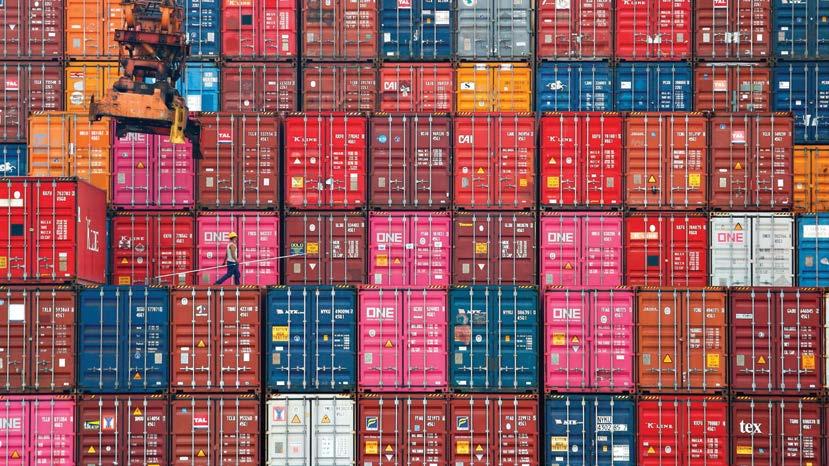
ASMAG CONDUCTED RESEARCH ON THE MATURITY AND SUITABILITY OF TECHNOLOGIES BEING USED IN THE SECURITY MARKET. BASED ON FEEDBACK FROM 323 MARKET PLAYERS, WE HAVE IDENTIFIED TECHNOLOGIES THAT ARE ALREADY MAKING A BIG IMPACT IN VIDEO SURVEILLANCE AND ACCESS CONTROL, AS WELL AS THOSE THAT ARE EMERGING
n Source: asmag.com
editorial@asmideast.com
Digital transformation in security continued to advance in 2022. Investment in the right technology can transform security from being merely reactive to proactive, open up new applications and help organizations become more optimized, efficient, and safe. The graph below shows the results of a survey in which more than three hundred people segmented the widespread use of new technologies in video surveillance and access control in relation to two criteria - technological maturity and suitability.
According to the results of the survey, edge storage (3), edge analytics (4), hybrid-cloud architecture (5), and 5G wireless communication (6) are mature and suitable for use, while digital twins (1) and augmented reality (2) are not so mature nor as suitable. 5G and edge computing are two technologies that go hand in hand, because 5G (voted as immature last year) increases speed, while edge com-
puting reduces latency. Users want more processing on end devices, facilitated by edge analytics and storage advances. Digital twins and augmented reality still have room to grow but their potential for optimizing security applications appears quite promising.
Also mature and suitable for use are multimodal biometrics (3), mobile access control (4), and multifactor authentication (5), while the same cannot be said for cloud access control (2) and partly for unimodal biometrics (1). With smartphones always
on hand and touchless authentication on the rise, mobile credentials have become increasingly mainstream, but readers feel cloud access control still has room to grow and mature. Multimodal and multifactor authentication trumped unimodal biometrics as users can benefit from better accuracy and speed.
When it comes to video surveillance, low light color cameras (4), AI video search of people and vehicles (5), bi-cameras (thermal + visible light) (3) are mature and suitable for use, while 8K resolution (1) and cloud video surveillance (2) are not so mature or practical. Advances in low-light color technology lead to their popularity over bi-spectrum cameras. AI video search for people/vehicles was voted the most mature and suitable out of all AI features. Cloud surveillance adoption is still slow but should pick up as it matures; while 8K may face issues with price and distribution.
For businesses worldwide, the slow decrease in the intensity of the pandemic
Advances in low-light color technology lead to their popularity over bi-spectrum cameras while AI video search for people/vehicles was voted the most mature and suitable out of all AI features.
comes as a relief. Although there are several concerns like geopolitical tensions and supply chain constraints, 2022 has been a positive year, as customers restarted projects and purchases. COVID-19 wreaked havoc across businesses in 2020 and 2021. Even after the initial healthcare crisis eased, other issues in the form of supply chain constraints, chip shortage, and geopolitical tension threw the markets into disarray. “Dormakaba operated in a challenging business environment in the financial year 2021/22,” said Mirko Meier-Rentrop, Deputy VP for Group External Communications at dormakaba. “On the positive side, there was good demand in all regions, and the company closed the year with a good order intake and backlog. This was also reflected in the strong organic growth of 7.7 percent for the financial year 2021-22.”
The whole world is suffering from microchip shortages. Hanchul Kim, CEO of Suprema, said they export products and services to more than 140 countries, and dealing with an unpredictable supply chain and an increased cost of raw materials has been challenging. Others agree, although adding that the new circumstances have also created new opportunities for businesses to explore. “The global chip shortage has been the headlining chal-


Meier-Rentrop pointed out that several factors continued to affect the macroeconomic environment. There were still pandemic-related lockdowns in several countries, which had an impact, particularly in China, due to its zero-Covid strategy. The supply chain issues impacted high-margin electronic products where orders could not be processed due to the component shortage. On top of that, labor shortage hurt construction projects. The impacts of the war in Ukraine and the accelerated inflation were also reflected in GDP development. In the first and second quarters of the financial year 2021-22, GDP in the G20 countries recorded quarter-on-quarter growth of 1.9 and 1.3 percent, respectively, according to OECD. In the third quarter of the financial year 2021-22, the impact of geopolitical tensions became evident as GDP growth in major developed and emerging economies contracted to 0.7 percent.
Ongoing and emerging trends
Interestingly the market appeared to pick up from the changes that the pandemic brought about. For instance, touchless solutions have become a norm over the last two years. But even as the pandemic abates, the market does not intend to return to the fingerprint and other older technologies. “All regions have recovered from the pandemic, so business is back on track,” Kim said. “During COVID-19, contactless solutions received a lot of attention in the access control market. As we shifted into the post-COVID era, this demand has increased even more as the irreplaceable advantages of contactless solutions have been made apparent. Contactless access control, including facial recognition, QR codes, barcodes, and mobile access technology, is more hygienic, convenient, accurate, and faster.”
lenge for many industries, ours included, in 2022,” said Devin Love, Senior Director for Software Products at Allegion. “Opportunity is even more present, as companies and building owners reconfigure how their spaces are utilized to preserve the privacy provided when working at home, while also
offering the space for face-to-face collaboration that people desire.”

Over the last decade, the physical and mobile access industry has drastically

evolved, especially during the pandemic. Prabhuraj Patil, Commercial Director for Physical Access Control Solutions in South Asia at HID Global, pointed out that from a customer’s point of view, challenges ranged from vulnerabilities to adjusting to the post-pandemic world. Some of these critical market changes, triggers, and opportunities are reflected in HID’s recent survey. Security and convenience were the top two challenges cited by over 1,000 global respondents. In the same survey, 40 percent stated that protecting against security vulnerabilities was their biggest challenge while being able to issue and revoke ID credentials efficiently was selected by 37 percent.
Kim said that as the market recovered, Suprema won several large projects that companies put on hold during COVID-19. They found that the demand for biometric and contactless solutions is increasing, especially facial recognition. “Adding to this, the demand for mobile access is growing in regions known to be fast at adopting new technology,” Kim added. “Suprema’s experience at adapting to rapidly changing markets and customer needs, along with our reputation for having the most advanced biometric and mobile access solutions on the market, combined to help us meet the increased demand.”
Significantly, customers are becoming more aware of best practices in access control and how to make the most of it. The market is also at the cusp of using mobile credential solutions. “The access control market is experiencing an awakening,” said Love. “Information about how spaces are being utilized and seamless access for all residents, tenants, and employees, is of increasing value. Mobile credentials are an expectation, but the industry is only scratching the surface on the potential technology can deliver to the space.” Patil pointed out that while there have been several challenges, the attention has now gradually moved to adopt new technologies to help mitigate risk and create safer workplaces. “This, in turn, has created a great opportunity for players like us,” Patil said. “In light of this demand, we have had a good response from our local customers to key innovations such as HID mobile access, next generation HID Signo readers, HID Aero controllers, and Seos credential technology.”
The current economic circumstances increase interest in access control solutions in the residential sector. Love pointed out that a lack of affordable housing is partly driving up residential demand, while government spending has allowed higher education and other institutional organizations to invest in infrastructure. “Overall, long-term drivers along with reconfiguration of spaces have sustained commercial demand, and electronic access control is gaining adoption beyond perimeter security,” Love added. Kim agreed that education is a sector where demand is increasing, particularly for mobile access solutions. “Most students use smartphones, and an emphasis on convenience is growing in today’s world,” Kim said. “Mobile access allows students to easily access school buildings on campus by authenticating their identity with their smartphones.”
At the same time, the average life expectancy is rising steadily, which means that institutions and private homes increasingly need barrier-free solutions that allow senior citizens to move easily from room to room. The world is becoming more urban, cities larger, and infrastructure more complex, requiring sophisticated solutions to support the seamless flow of people to where they want to go. Buildings and land should be both easily accessible and secure from a broad spectrum of threats. Meeting these combined needs efficiently and conveniently demands a comprehensive access solution.
Finally, technology influences practically every aspect of the access and security market, from digitization and distribution channels to networking products in the Internet of Things. Customers expect their experience of access solutions to inte-
grate seamlessly with their personal digital environments. “These five trends influence everything that dormakaba does, from strategy through product development to marketing and sales,” MeierRentrop added. “In addition to these five megatrends, dormakaba expects to access and credentialing policies across all vertical end markets to be strengthened, emphasizing adaptability, versatility, and health.” The peculiar nature of the postcovid market has ensured that almost all verticals began to see strong growth in 2022. While companies restarted commercial projects that were stalled for almost two years, governments have begun to invest in infrastructure with a vision to improve economies and offer better facilities.
For dormakaba, growth in the commercial sector’s construction and expansions in the industrial sector helped to regain market positions. With normalcy expected to return to the travel sector,
other verticals like hospitality are also in a recovery trajectory. “Growth in Americas was driven by a recovery in the US commercial construction market, particularly in renovation and replacement, Latin America strength, market share gains, and price realization that roughly equaled the volume contribution,” said Meier-Rentrop added. “In Asia Pacific, all major markets contributed to growth. Continued good growth momentum came from the business with touchless access solutions. For example, sales for touchless solutions in Hong Kong increased by around 50 percent in 2021-22 versus the previous year. And there was strong double-digit growth in door hardware, entrance systems, lodging systems, and mechanical key systems.”
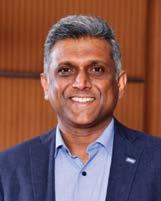
According to Meier-Rentrop, growth in Europe & Africa could continue on the back of a strong order book and a solid project pipeline across major marketssuch as dormakaba’s major contracts with Avinor to deliver self-boarding gates, one-way corridors, and related services for all Norwegian airports, and the REWE Group in Austria, the national supermarket chain. Kim added that oil and gas companies have also shown a strong interest in access control to enhance security on their sites. This may potentially be due to supply issues arising from situations in Russia.


David Thean, the General Manager of Asia at Gallagher Security, also added they are seeing an uptake in new construction projects compared to the past 3 years, albeit a little below what we have expected because of concerns about a possible global

recession. „The government sector/vertical has seen the most demand and growth because of infrastructure upgrading and a push for urbanization,“ Thean said. „Another vertical would be the hospitality sector, as these businesses are making a big comeback because borders are reopening and people across the world are starting to travel again for tourism.“
After COVID-19 brought a hiatus of about 24 months, 2022 has been a rather busy year for video surveillance companies. Several projects that were put on hold due to healthcare concerns have restarted, while customers are eager to invest in new plans that would increase market demand. “From a company perspective, we have seen solid growth across the year, driven by growth in market demand,” said Ray Mauritsson, CEO of Axis Communications. “We believe the recovery the markets are experiencing since the pandemic is a key factor in this.”
But the pandemic hasn’t been the only reason. Technological developments that allow customers to improve security and convenience have also increased demand. “2022 continued a growth path within the video surveillance industry,” said Charles Pitman, Product Marketing Manager at Genetec. “Customers are more and more comfortable with having connected devices and systems within their environment and are increasingly looking at ways to simplify system maintenance while having access to their security systems on the go.”
Supply chain disruptions and unavailability of components were one of the biggest challenges that businesses across the board faced in 2022. Although the chip shortage appears to ease now, the industry continues to reel under this pressure. “Like many other organizations, we are still challenged by the lingering effects of the pandemic combined with global component shortages and supply chain disruptions,” Mauritsson said. “While this situation is not unique to Axis, it has presented us with issues that have caused us to adapt. However, this has given us the opportunity to rethink and revisit how we go about the design and manufacture of our products, and as we see the markets recover and improvements in supply chains, we are now seeing steady and continuous improvement.”
Another problem was that the recovery from the pandemic had not been the same across markets. In many parts of the world, governments have remained slow to restart unrestricted travel and operations. Countries like China continue to remain cautious, prompting businesses to take things slow. “General market instability, supply chain issues, and labor shortages have all put infrastructure investment in business functions like security in a precarious position,” Pitman said. “Meanwhile, the slower-than-expected return to the office slowed down major projects and new construction.”
More customers are now aware of the power of analytics and how leveraging it could help their businesses. The reduced
cost, improved efficiency, and better protection that analytics offers have a better appeal than the reactive security devices of the previous era. “Over the last year, we have seen new projects of all kinds, private and public, requiring surveillance by design,” Pitman said. “Many businesses have been turning to video analytics solutions to strengthen site security, gain new insights, and solve unique problems. Greater adoption of video analytics has also been propelled by technologies such as machine learning and deep learning, which offer the potential to automate a lot of data processing and workflows while delivering actionable information to operators.” Pitman added that video analytics applications have continued to mature in ways that make them easier and more economical to deploy at scale. This was made possible by vendors who focus on hardware resource efficiency and offer more granular controls for running ana-

lytics at certain intervals or schedules instead of continuously.
Mauritsson added that increased demand is a natural progression as customers become more aware of security concerns and how to deal with them. More and more customers are attracted to advanced surveillance solutions that can offer better protection and peace of mind. “Firstly, there has been an underlying growth in our market for many




years now, mainly driven by an increased interest and need for security technology across all sectors,” Mauritsson said. “This growth in demand was not really affected by the pandemic, even though lockdowns and supply-chain issues had some short-term impact on Axis sales. Secondly, there is a demand for more and more innovative technology. We have always prided ourselves on being at the forefront of technological innovation, and with that comes an increased demand for our products.”
For many reasons, it isn‘t easy to point out verticals that are growing faster than others at the moment. New and old projects are picking up across sectors for many companies. “It’s difficult to pin any one vertical that has experienced the most demand and growth as so much of what we offer can be broadly applied to many sectors,” Mauritsson said. “We’re seeing growth across all major segments.” Pitman said that Genetec is also seeing growth across many sectors, particularly in the transport, public (government), enterprise–engineering, and industrial sectors. A report from KPMG suggests that 2022 will be a year of opportunity as the world learns from the past and works to rebuild with more resilience, sustainability, and equity. But since COVID-19 has significantly influenced people’s lives, consumer behavior would also have seen a dramatic change. “It will also be a year of uncertainty as new challenges emerge and social expectations continue to shift as we learn to live in a world with (not after) COVID,” KPMG noted in its report. “And infrastructure leaders have an opportunity to fundamentally change our collective path on the climate, social, and governance agenda.” n
But the improved demand does not mean an absolute lack of challenges. Most video surveillance companies are still forced to deal with several challenges, including supply chain irregularities, chip shortages, and other related uncertainties.David Thean, General Manager of Asia, Gallagher Security Ray Mauritsson, CEO, Axis Communications Charles Pitman, Product Marketing Manager, Genetec
Worldwide, the importance of data centers has also increased, prompting a need for better security systems in this vertical.
During the three-day-long security trade show, Intersec 2023, Dahua Technology showcased its latest security solutions and technologies to an audience of industry professionals. The company had a prominent presence at the event, displaying a range of solutions including Smart City, Intelligent traffic, Smart Parking, Smart Education & 3D LED Display.
 n By: Marketing Dept. Dahua Technology dhslo@dahuatech.com
n By: Marketing Dept. Dahua Technology dhslo@dahuatech.com
Apart from viewing the products and learning more about them, visitors of this year’s Intersec edition praised as one of the most successful so far, also received hands-on experience through a series of presentations and seminars, discussing current industry trends and providing insights into the latest security challenges faced by organizations worldwide.
The much-discussed display on the booth was the 3D naked eye LED display. Dahua’s stand showcased a massive LED curve screen to display a 3D anamorphic video. These screens are commonly used in advertising & entertainment, such as shopping centers, airports, billboards, & concert venues. This technology can also be used in other applications such as virtual reality, gaming, architectural visualization and even replacing the green screen from filmmaking.
Some other interesting products displayed by Dahua at the trade show were the ‘Smart Traffic Solution’, ‘Smart Education Solution’, and the ‘Smart Building Solution’
The company specializes in the manufacturing and development of security and surveillance technology, including products for smart traffic solutions.
The company specializes in the manufacturing and development of security and surveillance technology, including products for smart traffic solutions. These solutions include traffic cameras, smart traffic management systems, and traffic analytics software. Dahua’s smart traffic solutions aim to improve traffic flow and safety, reduce congestion, and make transportation efficient. Some specific features of Dahua’s smart traffic solutions include license plate recognition, automatic incident detection, and real-time traffic monitoring.
In the Dahua Smart Classroom solution, the company offers solutions to record classes and publish video and audio recordings online, allowing both teachers
and students to review each session at any time.
This AI-enabled teaching recording system enables recording, directing, testing, and interaction in a real classroom environment. It provides an immersive learning experience for students and helps teachers assess their lessons.
Dahua’s Smart Building Solution ensures security, elite access control system, visitor management systems, intrusion alarm, and detection system, and time attendance system. The Video Intercom product lineup eases communications and the wireless alarms keep the premises safe. Access control as one of the most important parts of the AIoT secu-
rity system develops passage security, In/Out security, and area access control based on hybrid identification.
In other technologies, Dahua showcased its ‘Full color ∞’ (with TiOC, Panoramic, Vari-focal, 4K, and Smart Dual Illuminators) and also ‘Multi-Lens Technology’ with 360°, 270° or 180° panoramic view for situational awareness.
With its ‘Dahua Think#’ corporate strategy launched in 2021, Dahua Technology focuses on two core businesses: City and Enterprise. The company firmly strengthens its technological strategies that include AloT and IoT digital intelligence platforms, comprehensively promoting the digital intelligence upgrading of cities and enterprises based on customer needs and creating more value for the digital-intelligent transformation of various industries. n

A new expert-authored whitepaper from ASSA ABLOY Opening Solutions considers practical security strategies which facilities managers can put into action right away.
 n By: Thomas Schulz, EMEIA Product Marketing Director, ASSA ABLOY thomas.schulz@assaabloy.com
Written by Simon Wilson,
n By: Thomas Schulz, EMEIA Product Marketing Director, ASSA ABLOY thomas.schulz@assaabloy.com
Written by Simon Wilson,
a 20-year veteran of the security industry, “Modernizing facilities management” analyzes the relationship between health, safety, access control and security — both physical and cyber. He concludes with practical, actionable recommendations for streamlining the management of facilities with the right access control solution.
“Effective facilities management is vital to any organization,” says Simon, who works as CLIQ Business Development Manager at ASSA ABLOY Opening Solutions EMEIA. “It’s about much more than compliance and regulation.
“Facilities management can help deliver an organization’s strategic objectives. It also ensures a safe working environment, which is key to the success of any business.”
The new whitepaper takes a step-by-step approach to the important questions — and potential answers — to tackling problems and threats which facilities managers face every day. Rather than treating these issues in isolation, Simon examines the links between the key problems which modern facilities management must tackle.
The whitepaper also considers the “value-adds” that effective facilities management can provide: not only convenience and operational efficiency, but cost efficiency too.
The central role of access — controlling it, securing it, adapting it — is a theme throughout the whitepaper.
“Fundamentally, effective facilities management is about finding solutions,” adds Simon. “The right solution protects the health and safety of staff and visitors, and in the process gives a facilities manager peace of mind.
“In addition, by helping a business and its managers to work smarter, it can provide a critical competitive advantage.” n
Suprema is a global leader in access control and biometrics with various access control solutions, including the 100% contactless BioStation 3 terminal, flagship facial recognition terminal FaceStation F2, and QR code/fingerprint recognition terminal X-Station 2.
Suprema has their own comprehensive BioStar 2 platform that has capability to integrate access control for up to 1,000 doors and elevators, and scale to enterprise levels through installing controllers and modules.
The Middle East region has a high demand for facial recognition and mobile access control solutions. BioStation 3 satisfies this need with an AI processor called an NPU (Neural Processing Unit), which provides the industry’s highest level of performance in facial recognition.

BioStation 3 is compatible with various access authentication options, including QR codes, barcodes, mobile access, and RFID cards.
BioStation 3 can authenticate different QR codes for visitors and members, and manages access and time and attendance for each user through the BioStar 2 security platform.
BioStation 3 is equipped with seamless communication features through VoIP Intercom and RTSP (Real Time Streaming Protocol)–based video monitoring.
“Suprema has a high market share in the Middle East, having secured customers throughout various verticals, including banks, government, oil & gas, organizations, hospitals, schools, and residences. “
Suprema is a leading global provider of access control, time and attendance,
and biometrics solutions. By combining world-renowned biometric algorithms with superior engineering, Suprema has introduced multiple innovations to the security industry over the last two decades. Suprema’s extensive portfolio range includes biometric access control systems, time and attendance solutions, live fingerprint scanners, mobile authentication solutions, and embedded fingerprint modules. Suprema is named among the world’s top 50 security manufacturers and has a worldwide sales network in over 140 countries with the number one market share in biometric access control in the EMEA region. n

There are some really exciting times ahead for alarm management. Sensors are going wireless, the iot is taking them directly to the cloud, and mobile is the “new normal” management platform. All of this has a profound impact on how we detect, distribute and manage alarms.

n Source: Spica International info@spica.com
The alarm industry has been somewhat shielded from the cloud/ mobile revolution that has swept access control and video surveillance. Perhaps that’s because existing technology, while relatively low-tech, fits well with the existing alarm management model, which in turn fits well with the existing business model of security companies that manage alarms as a service. The old normal goes like this: The alarm is triggered, the signal goes over a dedicated line to the security company’s monitoring and control center. The officer on duty deals with it, usually by calling the customer and, if necessary, dispatching the mobile unit or calling emergency services. This has worked perfectly for a long time. So what are the forces behind the new generation of IoT/cloud/mobile solutions?
Remote access and control are a new normal for doing anything and everything. We are used to knowing things immediately, as soon as they happen. We do not expect alarms to be slower than tweets. And we do not want to travel the distance just to arm the controller or turn off the alarm. And that’s exactly why mobility is inevitable. It used to be a joke that we have a mobile app for everything now. It’s not anymore. In fact, we now have multiple mobile apps to choose from for everything, even walking the dog. Related to this, sooner or later everything will move to the cloud. Without the cloud, there is no “do it from anywhere” or even “do it on mobile”.
When it comes to sensors and intrusion detection technology, not much really changes. Some of the business may be taken over by video surveillance (intelligent cameras), but the
cheap sensor-based market segment remains pretty much the same. The new thing there is wireless operation. Combined with the ever-decreasing prices of sensors and IoT connectivity, we can expect the number of sensors to grow exponentially, all predictions agree. With a large number of sensors, management becomes a bottleneck. It can no longer be done manually but requires an advanced, rule-based, automated management system. And there is only one solution for this requirement – cloud/mobile.
Central Monitoring System – CMS, remember? It’s a pretty impressive affair with all those big screens, busy operators, flashing lights, and red phones. Except it looks like we do not need it anymore. Thanks to the pandemic, people have discovered that many things can be done without sitting together. Your physical location no longer matters, we are entering the age of remote. This brings us to distributed alarm management. With a collaborative management platform, a workflow can be streamlined, optimized, and delegated to individuals with different roles, clearances, assignments, duties, and responsibilities.
Cloud applications are expected to offer integration APIs, a much easier and safer integration method than the infamous SDKs. Integration is becoming a major strategic issue – absolutely necessary for synchronization with identity management platforms, logical access, SSO solutions, etc. Not to mention integration with video surveillance, safety management, workforce management, and even different access control solutions among themselves. The cloud makes all of this cheaper and easier to develop, deploy, maintain and use. n



Are you often worried that you can‘t locate and deal with various abnormal situations immediately, so you will have to suffer from unnecessary property damage? To solve this problem, you may have installed cameras to capture real-time details at the scene. However, the cameras fail to understand what it sees. But now, AI will make a difference.
n Source: Press team, TP-Link niharika.muthreja@tp-link.com; www.tp-link.com
Artificial intelligence equips your surveillance cameras with digital brains to match their eyes. So, your cameras not only can record what they see but also understand the captured video as well. Simply put, backed by AI chips and deep learning algorithms, AI-powered cameras can wisely detect humans and vehicles of interest via real-time video content analysis, and deliver instant notifications to your mobile phone or PC. More than that, you will benefit from Smart Search based on target features and event type, then save hours on manual video reviews. Let’s take a deeper look into what specific benefits VIGI AI-powered cameras bring and how they safeguard your business.
When you can spot potential security issues earlier, you can minimize their impact. VIGI AI-powered cameras detect whether a suspicious individual is loitering in an area for a period of time and provide advanced warnings for the event. This feature can efficiently prevent some potential security issues from happening in certain places (ATMs, checkouts, lobbies, etc.). Line-Crossing allows you to set a virtual boundary in restricted areas and receive alerts anytime a person crosses it from either or both directions. This works much better than normal motion detection that
picks up movement only and keeps property damage to a minimum.
Another bonus of AI-powered cameras you will love for your business security is object removal/abandoned detection. The camera will inform you as soon as someone removes or abandons a specific object. This is very helpful for business surveillance, like retail stores, to catch shoplifters or detect objects left such as baggage, purses, dangerous materials, and more. You can also freely set customized focused regions based on your special business monitoring needs like staff departure monitoring. You will receive instant notifications once the VIGI AI-powered cameras detect someone leaving or entering the region. This way, VIGI AI-powered cameras can look out for your business security better.
For the first time, VIGI AI-powered cameras make it possible to track specified moving persons or vehicles and analyze the captured images intelligently. For example, if someone breaks into restricted areas, the VIGI AI-powered cameras will automatically pan and tilt to track the moving target and record real-time video. Now, you won’t miss any details. Imagine spending an entire day searching out target footage frame by frame. It is so exhausting and potentially delays response to a valid alarm. However, Smart Search can easily solve these problems, allowing you to review and locate certain video clips by event, vehicle, person, time, and more, rather than searching through countless unnamed playbacks. This greatly improves event backtracking efficiency and labor costs. In short, AI-powered cameras can bring you much more than you can imagine! VIGI AI-powered cameras are dedicated to protecting your business surveillance with a smarter and more reliable approach. n
Recently, the Dubai Future Foundation (DFF), in partnership with PwC, released a comprehensive report on the outcomes of the inaugural Dubai Metaverse Assembly. A statement made by H.E. Khalfan Belhoul, the CEO of DFF, at this landmark event significantly elevated my interest in the UAE’s metaverse efforts: “The biggest risk will be not taking the risk.” It is an emphatic statement because it rationalizes the nation’s sweeping reforms and initiatives related to Web 3.0 and its critical component, the metaverse.
 n By: Ali Ayoub, Exhibition Manager, ADNEC ali.ayoub@adnec.ae
n By: Ali Ayoub, Exhibition Manager, ADNEC ali.ayoub@adnec.ae
At a time when the metaverse accompanies piqued consumer interest and skepticism in equal measure, Belhoul’s words provide food for thought. The purported “risk”, the SEO says, pales in comparison to the potential rewards. Consequently, the UAE has undertaken broad-based efforts to gain a competitive edge in metaverse adoption, as evident from the launch of the Dubai Metaverse Strategy, which is expected to add $4 billion to the GDP annually and create 40,000 jobs by 2030. The said ‘value creation’ transcends economic sectors, with robust use cases being pursued already. The less-explored application, I believe, is in national security, where the metaverse can work wonders.
Etymologically, the promise of the metaverse is undeniable: ‘Meta’, which means ‘beyond’ or ‘transcending’, and the ‘universe’, which encapsulates everything
known to humankind. So, the transition to the metaverse can be likened to the will to transcend possibilities. At a time when a new, digital global order is shaping up, requiring nations to underpin bilateral relations, trade, national security, and the economy with innovations, the pivot to Web 3.0 - the next iteration of the internet - is a logical step. The Web 3.0 integration, which entails the use of digital twins and metadata, can enhance the efficiencies of security operations. For example, security teams can virtually visualize a city, its critical infrastructure, and its borders and leverage AI to identify loopholes and proactively correct them in the physical world.
Such possibilities are not novel, as they have been explored in the like of the Reynard Program, where researchers sought to identify virtual-world behaviors that exhibitors could act out in the real world. The objective was to identify suspicious behaviors and actions in the virtual worlds, such as the metaverse, and thwart their occurrence in the real world. At the same time, there has been an onus on policymakers and innovators to ensure that such capabilities do not infringe on human rights and personal liberties. In the UAE, that priority is seemingly not lost on the leaders, who are creating frameworks and regulations to safeguard the interests of all parties. The launch of the Virtual Assets Regulatory Authority (VARA) recently is a good case in point. Such policies might come off as more red tape in the short term but could translate to a metaverse with fool-proof cyber security in the long term.
WITH THE WIDESPREAD ADOPTION OF THE METAVERSE, THE IMPLICATIONS FOR NATIONAL SECURITY ARE PROFOUND. ALI AYOUB, SECURITY AND GOVERNMENT RELATION EXPERT BELIEVES THE UAE CAN UNLOCK THEM BEFORE MOST


In any innovation, the early iterations tend to accompany loopholes and challenges, which bad actors and cyber criminals try to capitalize on. So, while Web 3.0 is inherently more secure by virtue of blockchain’s immutability and transparency, it is not foolproof. In this nascent stage of development, metaverse applications merit effective cybersecurity methods. For starters, people must gain awareness of the potential challenges they could encounter in Web 3.0 applications. Innovators, for their part, must get acquainted with advanced threats while deploying best practices such as zero-trust network access and AI-driven tools that can orchestrate security operations at scale.
As far as raising awareness, upskilling, and training are concerned, the metaverse offers a favorable environment. In fact, it is encouraging to learn that multiple leading public and private entities in the UAE have already made considerable headway in harnessing the immersive environments of Web 3.0 for training. Conglomerate Majid Al Futtaim has trained over 1,000 employees thus far, whereas Emirates Airlines has outlined its plans to hire 4,000 cabin crew members by mid-2023 and train them in the metaverse. Likewise, DAMAC’s D-Labs, Metapolis (the company behind the world’s first metaverse-as-a-service), and multiverse Labs, among others, are exploring use cases in their respective sectors, developing innovative productsservices, and gaining a competitive edge while contributing to the larger Web 3.0 vision of the UAE.
Yet, the probable outcome is not a public-private duopoly; it is quite the opposite, with consumers gaining more control over data, technology, and products/services. Unlike the current Web 2.0, where Big Tech has the monopoly, Web 3.0 is about de-monopolization and a level playing field. In the context of the changing global order, that equates to higher parity among nations in terms of diplomacy, military strength, and the economy. Every nation, irrespective of its history, can chart a new course for itself. So, it is easy to see why, in the words of H.E. Hkalfan Belhoul, the biggest risk is not taking the risk.
Ali Ayoub is an Arabic entrepreneur and security expert. He is also the man behind the Annual World Police Summit project of Dubai Police, designing and developing its brand mark identity. n
Unlike the current Web 2.0, where Big Tech has the monopoly, Web 3.0 is about demonopolization and a level playing field.
IN TWO WEEKS, THE DUBAI POLICE WILL HOST THE SECOND EDITION OF THE WORLD POLICE SUMMIT, THE WORLD’S MOST INFLUENTIAL GATHERING OF LAW ENFORCEMENT OFFICIALS, SECURITY EXPERTS, AND DECISION MAKERS.
n By: Editorial Team, a&s Middle East editorial@asmideast.comThe Summit will take place at the Dubai World Trade Centre from 7-9 March 2023, under the patronage of His Highness Sheikh Mohammed bin Rashid Al Maktoum, Vice President and Prime Minister of the UAE and Ruler of Dubai. Across three days, six conferences and a comprehensive international exhibition, over 15,000 visitors are expected to join leading experts to discuss the most innovative policing techniques, from crime prevention, anti-narcotics and forensic science to drones and K9.
The Summit will bring together over 230 leading speakers including INTERPOL Secretary General Jurgen Stock, NYPD Commissioner, Keechant Sewell, Royal Canadian Mounted Police Commissioner, Brenda Lucki, LAPD Commander Ruby Flores, and New Zealand Commissioner and Chief Executive, Andrew Coster. These sessions aim to create a global policing community able to meet the future with confidence by using the most innovative technologies and creating part-
nerships that enable cooperation and collaboration under international standards. “It is only through collaboration that we can find new ways to overcome today’s policing challenges. That is why the World Police Summit matters, as it is the world’s leading dialogue forum for policing and will help the global policing community come together to build a safer tomorrow,” asserts Christopher Hudson, President of DMG Events.
Underlining the importance of the event Thomas Pramotedham, CEO of Presight AI, says: “AI-powered analytics will shape the future of policing. That is why it is
important that we all come together at the World Police Summit to discuss the role technology can play in supporting law enforcement agencies. Together, through collaborative dialogue, we can turn all-source big data from Presight.ai into deep insights for decision-makers to improve policies, refine strategies, and create safer societies.”

The event will also feature over 250 local and international exhibitors who will showcase the latest technologies and innovations used in combating crime. Participating companies include Rafael, Dell, IDEMIA, Beacon Red, Cisco, Canon and many more.
The World Police Summit has attracted some fantastic sponsors, including the UAE’s Executive Office of Anti Money Laundering and Counter Terrorism Financing as a gold sponsor. It has also secured strategic partnerships from INTERPOL, ROADPOL, UNODC, GCCPOL, IACP, UNICRI and other. n

New for this year’s Summit, the World Police Awards will champion those law enforcement professionals keeping global and local communities safe and upholding the highest international standards.

THE 2023 EDITION OF THE WORLD’S LEADING AUDIO-VISUAL AND SYSTEMS INTEGRATION INDUSTRIES’ BUSINESS-TO-BUSINESS EXHIBITION SURPASSED ALL EXPECTATIONS FEATURING THE RECORD NUMBERS OF VISITORS. EXHIBITORS PRESENTED SOLUTIONS FOR NUMEROUS VERTICAL SECTORS, AND THE VISITORS ARE AV AND IT PROFESSIONALS AND USERS OF AV SYSTEMS.
ISE 2023 delivered in style for the global AV and systems integration industry and the city of Barcelona (31 January-3 February 2023). Returning to its normal Jan/Feb timeslot in the AV calendar, ISE 2023 had 58,107 unique attendees from 155 countries, alongside record-breaking occupation in the city’s hotels, bars and entertainment venues, and with exhibitors reporting unparalleled footfall on booths across the largest ever ISE show floor.
Mike Blackman, Managing Director of Integrated Systems Events, commented: “It’s been an extraordinary week and it’s hugely gratifying for us to look back and realise we’ve delivered an exceptional show for our industry and the wonderful city of Barcelona. We’ve had unprecedented visitor levels to the show, so much inspiring content and features on display, and ground-breaking visits from the King of Spain on Tuesday and the President of Catalonia on Thursday to add both a royal and a political seal of approval to the show. This week at ISE 2023 confirms that we can safely say the global AV and systems integration industry is back with an impressive bang!” The first day of the show set the tone for the
week with the highest number of opening day visitors ever for an ISE show, visiting the record 56,870sqm of floorspace over the show’s 6 halls and the Audio Demo Rooms, where iconic French pioneer of electronic music Jean-Michel Jarre unveiled his latest album. The trend continued for the rest of the week with a final total of 58,107 attendees to ISE, making 133,606 visits to the show floor. On the first day, King Felipe VI of Spain took a tour of the show floor stopping by a few booths to take in a small sample of the technology on display. The Royal Party was accompanied by Ada Colau, Mayor of Barcelona, Núria Marín, Mayor of L’Hospitalet de Llobregat, Laia Bonet, 3rd Deputy Mayor of Barcelona. Pere Aragones, President of the Government of Catalonia also visited ISE and took time to visit some of the 70 Catalanbased companies exhibiting at the Gran Via, Fira Barcelona this week.
Thought leadership and inspiring stories were themes for the three keynote speeches held during the show. The opening day BK Johannessen of Epic Games highlighted how technology trends in the gaming industry is driving audio-visual innovation to new heights of creativity. He drew on experience of cutting-edge projects in gaming, film and broadcast to engage and entertain the audience. One of the oldest and best-known competitions in inter-
This year edition sets new records in Barcelona.
1,052 exhibitors
58,107 unique attendees
155 countries represented 133,606 visits to the show floor covering 56,870 sqm
national sailing, the Americas Cup provided the backdrop to Stephen Nuttall’s keynote on day two of the show. As the sailing race’s head of television, he related his first-hand experience of the unique technical challenges the event sets and the spectacular results when everything goes to plan. His unique perspective provided the perfect taster for the 2024 event which is set to take place in Barcelona. Fran Chuan of InnoQuotient gave the keynote on Thursday 2 February - “How Innovative is the AV Industry?” presenting the results of ISE’s Culture of Innovation 2023 Survey, using the proprietary InnoQuotient tool.
Of particular note was the brand-new Content Production and Distribution zone making its debut in Hall 6. Offering a blend of creativity and technical solutions the new zone provided inspiration for integrators and end-users in this fast-growing and exciting area. Following this auspicious beginning the zone will be back, in an even more impressive version for 2024. n

MORE THAN 43,000 EXHIBITORS FROM 131 COUNTRIES MET AT THE WORLD’S LEADING SAFETY, SECURITY, AND FIRE PROTECTION EVENT. THIS EVENT RESTORED THE CONFIDENCE OF EXHIBITORS AND VISITORS AND PAVED THE WAY TOWARD A NEW ERA OF INDUSTRY’S COGNITIVE SECURITY AND SURVEILLANCE

n By: Editorial Team, a&s Middle East editorial@asmideast.com
On January 17-19, Dubai World Trade Centre (DWTC) was a global security ground zero which prompted thousands of visitors to network and do business at this very spot. Leading innovators, companies, and experts got an opportunity to exchange ideas and showcase their products in the course of five industry-leading conferences. Intersec 2023 will be remembered as the most dynamic one so far in many aspects. It was obvious that the attendants were eager to meet and shake hands, talk over a cup of coffee, and share thoughts in person without any restrictions. All signs are pointing in the direction that the industry at large is heading toward a new era of cognitive security and surveillance.
“With emerging technologies playing a leading role in driving change across the ecosystem, the success and future of the security and surveillance industry lie in moving from
Exhibitors: over 800 from 55 countries
Visitors: 43.305 from 131 countries
Attendees from the GCC, Europe, Asia, and the Americas account for 49 percent of the total headcount
Gross square meters: 48,331 m2 dedicated to product showcases for commercial and perimeter security, homeland security, fire and rescue, safety and health, and cybersecurity
an industry-driven strategy to a customer-focused strategy,” it is said in a new PriceWaterhouseCoopers report which also asserts that the shift can be supported only through strategic partnerships. Together, they can build a robust technology foundation in the role of an enabler that relies on a collective effort throughout the system. The security industry will benefit from new visions presented at the event which will only gain momentum in terms of new ideas and technological projects in years to come. This time, visitors and exhibitors were like desert trail survivors - hungry and thirsty for new ideas and perspectives.
One of the most memorable moments was the Intersec 2023 Award ceremony held at the prestigious Ritz Carlton DIFC in Dubai to celebrate product innovation, individual accomplishments, and business achievements. H.E. Khalifa Ibrahim Al Saleis, CEO of Security Industry Regulatory Agency (SIRA), H.E. Mohamed Hamad Al Kuwaiti, Head of Cybersecurity Council, UAE Government and Turki Bin Matooq Al Thonayan, Chief Executive Officer of the National Security Services
During the Intersec, we had a chance to talk to some of the exhibitors. Here are some impressions they shared with the a&s Middle East team on the floor Jens Uwe-Ludwig AMG Systems sale manager for Europe, This year was busier than last year as we had no restrictions. The timing was changed. A lot of visitors are from Europe, ME, and Africa. The quality of visitors was good. Above the expectation of last year. Organizers complain they are running out of space. I think in the future we will have even bigger events like this. This event showed that people still like to meet face to face which we were denied due to the pandemic.
Andrea Sorri, AXIS COMMUNICATION Segment Business Development


A lot of engagement from customers and system integrators. They want to know what is next and what they can do more with the existing infrastructure. They want to do more with what they have. We had an opportunity to discuss with so many visitors from the region of course. We shared our views on how the camera may help in specific segments, public safety, or improving mobility like traffic management. This was a big event with a big flow of people with a deep interest in the topic. I already see that most of this audience will come again to the next edition.
Faizan Ahmed, Business Development Manager from TP-Link

For us, this was an exceptionally good event. We have seen many quality customers and resellers which is helping them and us at the same time. We met a lot of consultants and a lot of resellers. This was an incredibly good place to show our product line to them. They are giving us the confidence that our products are good. We got a lot of leads, and we will come next year.
Isabel Martinez-Serrano, BOSCH Building Technologies Fires Systems

The event definitely met our expectations and even beyond. We came to see what the audience was going to be and we were positively surprised about the vast number of attendees. We were overwhelmed by the huge number of people visiting us. Not just by number but also with the quality of visitors coming over. We had a chance not just to meet our customers all over the region and beyond but also new prospects. People really bring their business behind. To me, out of US Intersec is becoming the largest show for security.
(SAFE) were among the delegates attending the Award event.
The winners in the security category included: Homeland Security Product/Service of the Year: EnforceAir: D/Fend Solutions’ Counter-Drone Technology – D-Fend Solutions.
Commercial & Perimeter Security Products/Service of the Year: OPTEX REDSCAN Pro LIDAR series – OPTEX Europe LTD. Cybersecurity Product/Service of the Year: Managed Detection and Response services
powered by AI platform – Alsaac – Atos Security Sustainability Product/Service of the Year: Offsetting the carbon of the Electronic Security Manufacturing sector – Secure Logiq
Furthermore, Khalid Al Khatib, CEO of NAFFCO, was named the Regional Leader of the Year while Essa Ahmed Al-Mutawa of Dubai Civil Defense became the laureate of the Young Emirati Achiever Award as one of the show’s rising stars. On behalf of a&s
Middle East, we would like to congratulate all award winners.
Intersec was also home to cutting-edge knowledge-sharing sessions. The UAE Cybersecurity Council hosted a conference with attendees ranging from government leaders to CSOs and CISOs from the oil and gas industry, BFSI, healthcare and hospitality, and energy and utilities. A dedicated Fire & Rescue Conference was also hosted by Dubai Civil Defense, while a highly focused Safety & Health Seminar explored the new MENA regulatory changes. Intersec 2023 exhibitor Ateis Middle East, a leader in the life-safety industry, needed no convincing when it comes to the show’s potential. Its COO Philip Witts called the event “the number one global event for our industry.”
From January 16-18 2024, Intersec’s 25th edition will once again become a prime meeting spot for the industry at the same venue. n

Key Security Events in 2023
MAR
World Police Summit

7 – 9 March, Dubai, UAE
https://worldpolicesummit.com
MAY
Security Middle East Conference
9 May, Riyadh, Saudi Arabia
https://securitymiddleeastconference.com

JUN
International Security & Safety Exhibition & Conference

19 – 21 June, Cairo, Egypt
www.eise.com
OCT
Intersec Saudi Arabia

3 - 5 October 2023 at Riyadh, Saudi Arabia
https://intersec-ksa.ae.messefrankfurt.com/ ksa/en.html
APR
Secutech Taiwan
26 – 28 April, Taipei, Taiwan
https://secutech.tw.messefrankfurt.com/ taipei/en.html
MAY
IFSEC International

16 – 18 May, London, UK
www.ifsecglobal.com
SEP
ISAF Fuari
14-17 September 2023, Istanbul, Türkiye
https://www.isaffuari.com/en/isaf-security/

OCT
OFSEC, Oman Fire, Safety and Security Event

9-10 October 2023, Oman
https://www.ofsecevent.com/
Bosch empowers you to build a safer, more secure and enjoyable world
Robert Bosch Middle East FZE
Address: DAFZA, Block A701, West wing 5, Dubai Airport Free Zone, Dubai, United Arab Emirates
TECHNICAL PROTECTION
Vendor-neutral Physical Security Information Management (PSIM)
Advancis Middle East
P.O. Box 73309
Abu Dhabi, United Arab Emirates
Tel. +971 2 444 2503
Email: info@advancis.ae
Web: https://advancis.net
The global leader in door opening solutions
United Arab Emirates Qatar Egypt Saudi Arabia
info.me.open@assaabloy.com www.assaabloy.com/ae
Tel.: +971 4 212 3300 www.boschsecurity.com
Honeywell Commercial Security offers integrated security solutions within:
* Video Surveillance
* Access Control
* Intruder Detection both as standard and cloud based systems.
Contact: Dubai: +971 4 4505 800 Abu Dhabi: +971 2 2349 101 https://www.honeywell.com/ae
Dahua Technology Co., Ltd.
1187 Bin’an Rd., Binjiang, Huangzhou, Zhejiang 310053, China
Tel: (86-571)8768 8883, 2893 9666 | Fax: (86-571)8768 8815
Email: overseas@dahuatech.com | www.dahuatech.com
Video surveillance products and solutions

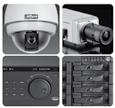
A global player in sensing technologies
Indoor intrusion sensors
Outdoor beam sensors
Outdoor intrusion sensors
Vehicle detector for gate and parking systems
People counting www.optex-fa.com
ELECTRONIC LOCKING SOLUTIONS FOR HOSPITALITY

Tel.: +34 943 344 550 Email: hospitality@saltosystems.com www.saltohospitality.com
www.hikvision.com
Man Guarding
Technical protection
• Video surveillance
• Access control
• Intrusion detection
• Item theft protection
• IP and network solutions
• Perimeter protection
• Fire detection
• Gas detection
Mechanical protection
Cash/valuables-in-transit
Cyber security
Digital forensics
Software solutions
Smart home
Internet of things
Security management Investigations
Building management
Market research
Legislation and standards
The world leader in access control, time & attendance and biometric solutions
1
m.shenawy@supremainc.com)
Tel: +971 4 2357 996 www.supremainc.com
Public safety, public communication and public space design
TOA Electronics Europe GmbH www.toa.eu marketing@toa-eu.com +49 (0)40 25 17 19 0
Attribute & Scene Search with ND9442P / ND9542P
Public communication public
TOA
Tel: +966 920033372 info@inteleye.sa

